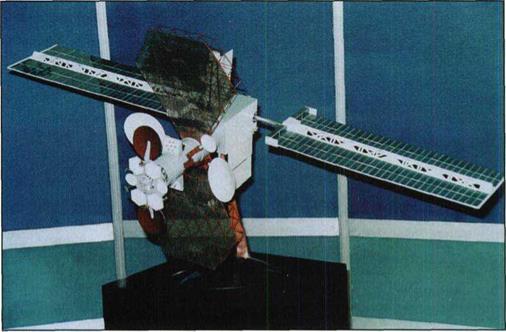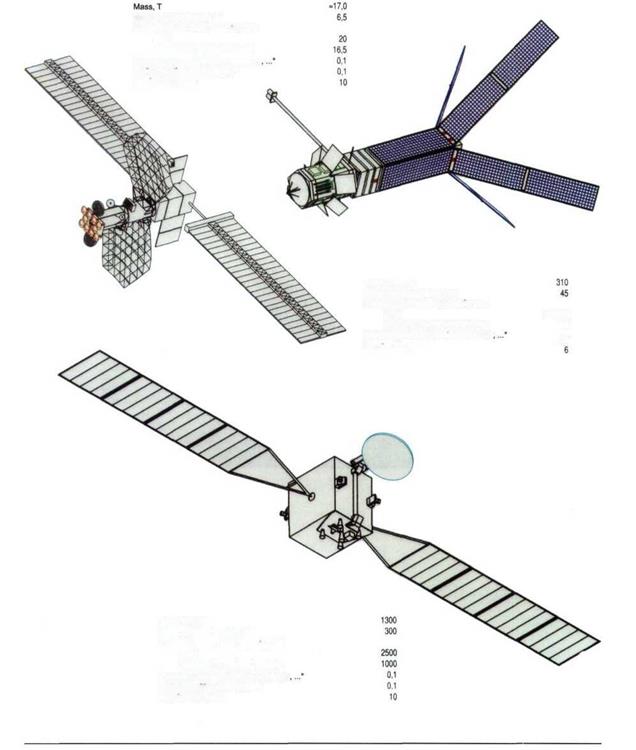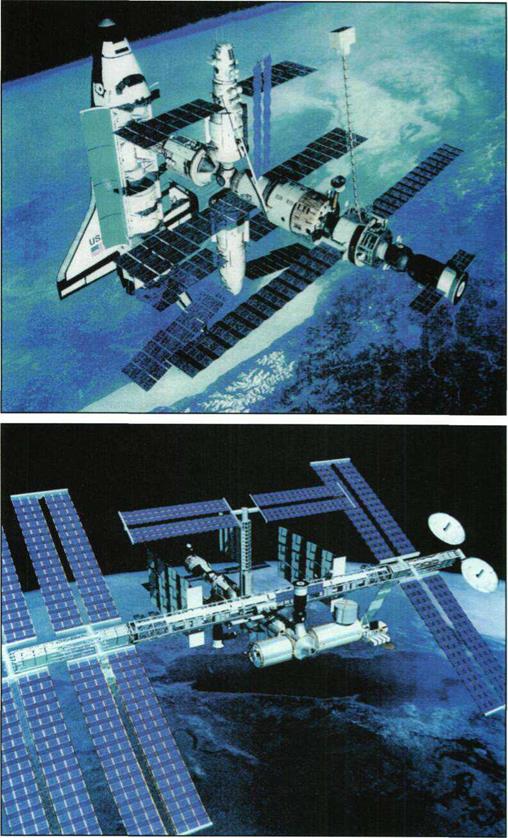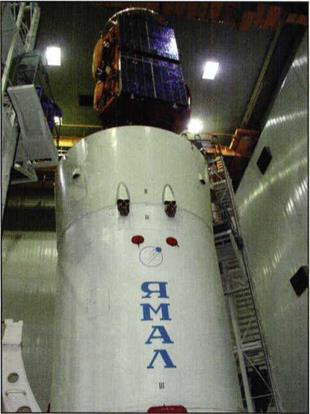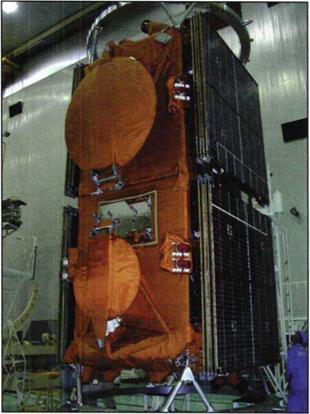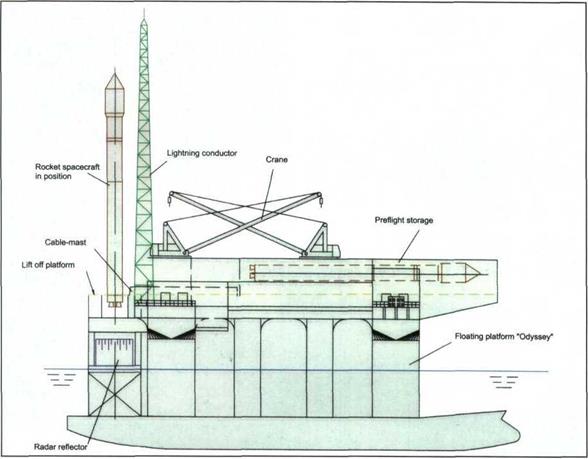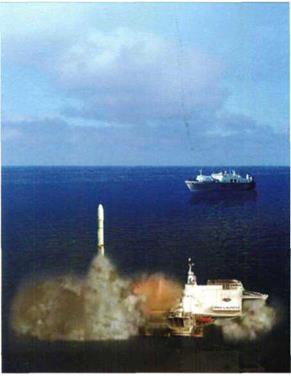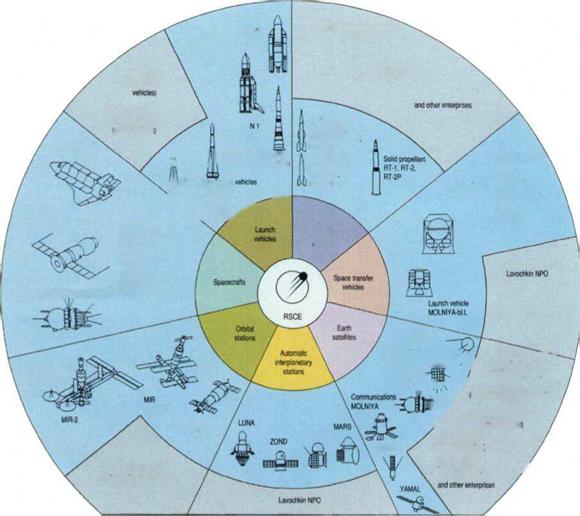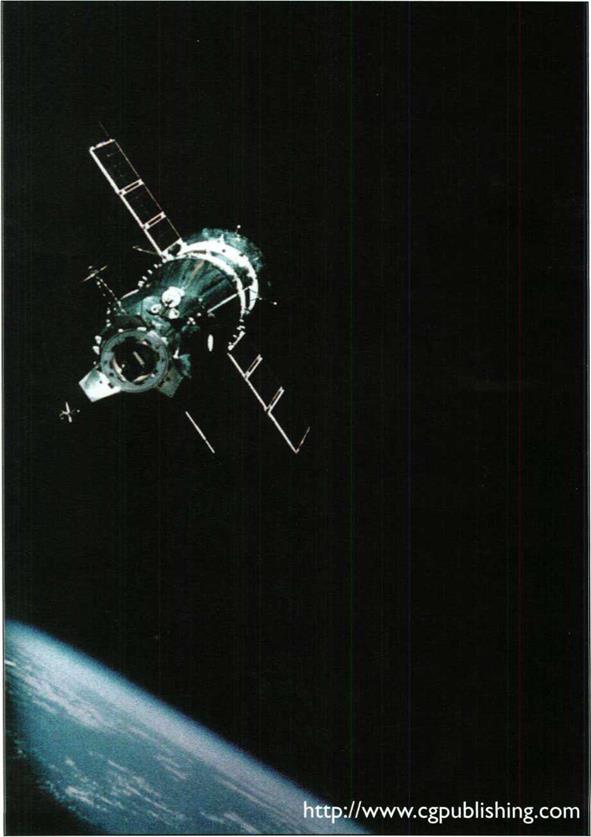FROM FIRST SATELLITE TO ENERGIA – BURAN and MIR
Editor’s Introduction
When I first acquired an imprint of the original Russian edition of this book I sat and perused the pages in stunned silence. I felt as though I had fallen into some kind of strange parallel universe. Within the pages were pictures of things familiar and yet not so.
It is perhaps a testament to the ingenious human spirit that two entirely divergent cultures could make such remarkable strides in the field of space exploration and yet indelibly stamp their own mark on the designs. The inexorable laws of physics dictate that there are certain absolutes which constrain us, but the fact remains that there are many ways to achieve the same goals.
In the following pages you will see images which bring to life the dextrous faculties of the Russian engineers and scientists. Arrayed within are an impressive string of designs which placed the Russian people in the vanguard of space exploring nations.
In much the same way as the United States had done, the victorious forces of the Soviet Union returned home at the end of World War 2 with the spoils of war. Accessing much of the remarkable research undertaken by the German scientists at Peenemiinde the great designer S. R Korolev brought the R-l missile to life and placed his country on a road peppered with historic accomplishments.
From I957’s first artificial satellite Sputnik through to the remarkable space stations of the end of the 20th century the Russian people and the engineers and scientists of Rocket & Space Corporation Energia have created and sustained an impressive legacy of technological triumphs.
At the turn of the millennium the Russian and American people are now working together with people from around the world to establish the International Space Station. Undoubtedly this synergy between East and West has only just begun to bear fruit and the world has yet to see where this new detente between old adversaries will lead us. One thing is clear however, the aptitude and excellence of the designs which continue to emerge from Rocket and Space Corporation Energia will continue to surprise us.
Robert Godwin (Editor – English Edition)
Special thanks for assistance with the English edition to:
Space Media Incorporated and
Space Hab Incorporated
Two significant events laid the foundation for the epoch of space exploration: launch into Earth orbit of the world’s first artificial satellite (October 4, 1957); and the first manned Earthorbiting space flight (April 12, 1961). With these landmark events, the evolution of national cosmonautics entered the history of mankind.
Preceding these events, much hard work was undertaken in the development of rocket and space technology, and its associated industries, beginning as early as 1946.
In the spring of 1946, Nil (Research Institutes), KB (Design Bureaus), and test centers were created in accordance with a government decision, and plants for the development and manufacture of ballistic long-range missiles were conceived.
88 State Research Institute of Reaction Armament (NII-88) (which in 1956 became the OKB-I independent organization and now is called S. P. Korolev space corporation Energia) acted as the prime organization for this work. At that time, a team led by General Designer Sergei Pavlovich Korolev was engaged in the design of ballistic long-range missiles with liquid rocket engines.
While complying with state assignments to create combat long-range missiles, S. P. Korolev oriented his team to simultaneously develop and perform space exploration study programs beginning with research of the Earth’s upper atmospheric layers. Therefore, after the flight of the first native ballistic missile, R-l (October 10, 1948), flights of R-l A, R-IB, R-IV and other geophysical rockets followed. After the successful launch of the world’s first intercontinental ballistic missile, R-7 (August 21, 1957), launches of the first Earth artificial satellites were performed, as well as launches of spacecraft of various purpose using modified R-7 missiles. Wide-scale exploration of space had begun: Luna, Venera, Mars, Zond and other automatic interplanetary stations were launched; flights of unmanned and manned spacecraft of theVostok type were made; multi-seat spacecraft of the Voskhod type were created; and the first cosmonaut egress into open space was carried out.
As the research scope was widened and studies were extended, Korolev delegated specific research and development subjects to other organizations, transferring to them his deputies and the best qualified personnel to continue the work begun. For example, all matters related to communication satellites he referred to the KB led by M. Ph. Reshetnev; subjects of probing and photography of the Earth to D. I. Kozlov; problems caused by studies of deep space and automatic Earth artificial satellites to G. N. Babakin; and so on, keeping manned spacecraft and heavy launch vehicles for himself. Therefore, practically all of the KB’s engaged in the field of space technology originated with, but were then separated from, the KB led by Korolev himself.
The team of S. P. Korolev, continuing his traditions, created a new series – the Soyuz spacecraft – with which the docking of spacecraft in orbit was tested, allowing crew members to transfer from one spacecraft to another.
At the beginning of the I970’s NPO Energia (the former Korolev KB) was headed by academician V. P. Glushko.
At this time a new stage of orbital station creation was begun. The problems involved in long-term station operation were solved. Crew rotation and cargo delivery were performed using both manned and cargo spacecraft.
The Mir station, to which the Kvant, Kvant-2, and Kristall research modules were later docked, was in orbit from February 20, 1986 until its successful deorbit in 2001.The work performed at orbital stations provided great scientific and national economic value. International crews took part in flights to the orbital stations.
The Energia launch vehicle, combined with rocket boosters created at NPO Energia, allowed a universal space platform, inside a cargo transport container, to be put into near-Earth orbit to solve several tasks of national economic purpose, including the creation of global communication system, Telecast. It also put automatic interplanetary spacecraft into flight trajectories to the Moon, the planets and deep
space, providing both new, powerful acquisitions of scientific knowledge and practical human activity in the study and exploration of space.
The need for reducing the cost of injecting payload mass into orbit is the main stimulating factor for further modifications and creation of new launch vehicles. Zenit and Energia-M launch vehicles, developed on the basis of the Energia system, allow this task to be solved.
The national space program has always envisaged cosmonautics as being used not only in the interests of our country, but in those of all mankind.
RSCE stands ready to exchange its achievements in space with all countries. We propose performing launches of spacecraft of other nations and international organizations with our launch vehicles and carrying out joint studies at orbital stations, based on mutual agreement.
As always, we shall do everything to keep space peaceful, international, and serving the interests of all mankind, both now and in the future.
![]() President of S. P. Korolev Space Corporation Energia Yu. P. Semenov
President of S. P. Korolev Space Corporation Energia Yu. P. Semenov
Space for science, only for peaceful purposes, for the benefit of a man relentlessly perceiving the innermost mysteries of nature – that is the way space studies are developed and performed.
S. P. Korolev
In 1946 S. P. Korolev was charged with heading the development work on ballistic liquid-propellant long-range missiles.
Having gained experience with the prototype research missiles of the pre-war period and having studied the problems with the German missile weapons, Korolev began his own independent path of development. He created a number of native teams within the rocket-space complex, heading up the manned spacecraft and heavy launch vehicle development group himself.
To provide operational solutions to all of the various fundamental scientific and technical problems encountered in the course of developing the missile complexes, Korolev initiated the Council of Chief Designers, including S. P. Korolev, V. P. Barmin. V. P. Glushko, V. I. Kuznetsov, N. A. Piljugin, and M. S. Rjazansky. Each Chief Designer headed his own KB (Design Bureau), each with a different specialty.
The first controlled ballistic long-range missile, the R-1, was developed by the Korolev team based on the German A-4 (V-2) rocket in 1948.
The R-1 missile was 13.4 tons in mass, had a 270 km range, and a non-separating nose cone with a mass of I. I tons. The R-1 missile engine, RD-100, was created based on the German rocket engine at the Glushko KB. Liquid oxygen and alcohol were used as the propellant. Missile flight control was performed using aerodynamic vanes and gas control jets.
13 NIl’s (Research Institutes) and KB’s, as well as 35 plants, took part in the creation of the R-l missile. The first launch of the R-l occurred on September 17, 1948. It failed. Because of a control system failure the missile deviated almost 50° from the flight line. Success came with an October 10, 1948 launch. In 1950, after completion of flight design tests, the R-l missile was put into operation with its ground support complex.
Hand-in-hand with the creation of combat ballistic missiles, on Korolev’s initiative, a program to research the upper atmosphere was developed in partnership with institutes of the Academy of Sciences of the USSR. Based on the R-l missile, R-l A, R-IB, R-IV, R-IE and other geophysical rockets were created. Using these missiles comprehensive studies of the atmosphere up to an altitude of 100 km were carried out. On April 21, 1949 the first geophysical rocket, the R-l A, lifted two containers with scientific equipment to an altitude of I 10 km, they were then recovered using parachutes.
Further work on ballistic missiles led to the R-2 in!950.To increase the accuracy, the missile nose cone, 1.5 tons in mass, was made separable during flight. The R-2 range was 590 km with a launching mass of 20.3 tons. Thus, in 1951, a second missile complex was put into operation for the Soviet Army.
Based on the R-2 missile, the R-2A geophysical rocket was created which performed atmospheric probing up to an altitude of 210 km.
In 1953 the first tactical missile using a storable propellant (nitric acid and carbon-hydrogen fuel), the R-1 I, was created with a range of 270 km. The R-l I’s launch mass was 5.5 tons and the nose cone mass was 0.67 tons. The engine thrust was about 8 tons with the system propellant developed by the Isaev KB installed on the missile. The thrust vector control was performed by gas jet. The first launch of the R-l I missile occurred on April 18, 1953. In 1955 the missile was put into operation.
The R-1 I was the basis of development of the R-l IM and R-l IFM missiles. The R-l IM missile was designed to use a nose cone with a military nuclear charge. The first launch of the R-l IM missile was performed on December 30, 1955. A complex with R-IIM missiles was put into operation in 1958.
The R-l IFM missile was designed to be launched from submarines. The R-l IFM was first launched from the swinging sea stand in May 1955, and then on September 16, 1955 from a submarine. The missile was launched from submarine above the water line. The R-l IFM missile opened up a new trend of development in combat missiles – sea-based missiles – and was put into operation by the USSR Navy. Further work on sea-based missiles was transferred to a newly organized KB which was headed byV. P. Makeev, successor of S. P. Korolev. The missile was first launched from underwater on December 23, 1958.
Work on creation of ballistic long-range missiles continued at OKB-I and, as a result of goal-oriented studies and experiments, the first strategic missile, the R-5, appeared. The first R-5 launch was on March 15, 1953, with a range of 1200 km. A liquid oxygen and alcohol engine of 43.8 tons thrust at ground level was installed on the missile. Flight control was performed by gas jets and aerodynamic surfaces.
In 1955, a modification of this missile, the R-5M, with a nuclear military charge in the nose cone, was developed. The first launch of the R-5M missile was on January 21, 1955 and its testing with a nuclear military charge was carried out on February 2, 1956. In 1956 the R-5M missile was put into operation.
Along with the R-5 and R-5M missiles, geophysical rockets R-5A, R-5B, R-5V, and R-5R were created and used to continue studies of the upper atmospheric layers and space, as well as to investigate advanced rocket performance. On February 21, 1958 the R-5V rocket lifted scientific equipment with a mass of 1520 kg to an altitude of 473 km – a record at the time.
The creation of the two-stage intercontinental ballistic missile, the R-7, was the outstanding achievement of native rocket development. The launch mass of the R-7 missile was 280 tons. Unlike preceding missiles, the launching facilities for the R-7 missile were stationary. Launch of this missile from USSR territory could respond to nuclear attack from practically any point in possible enemy territory.
The first stage of the R-7 consisted of four side units. The second stage core unit also included an upper compartment in which a payload of up to 5.4 tons was accommodated. The main four-chamber engines designed by V. P. Glushko and new control engines from S. P. Korolev for controlling the thrust vector were installed in these units. All engines used liquid oxygen and kerosene. The drive for the turbopump units was actuated using hydrogen peroxide. The engines of all units were started on the ground. The liftoff thrust was 406 tons.
Because of its overall dimensions, the missile was delivered to the testing grounds by rail in a disassembled state. The missile assembly, with further pneumo – and electro-tests, was carried out at the technical complex specially built for this purpose. The assembled and tested missile was transported to the launching site by railway line using a special transport-installation unit propelled by a diesel locomotive. The loading of the missile propellant components was carried out from mobile loading units delivered to the launching site after the missile.
The first launch of the R-7 missile, on May 15, 1957, was a failure. The R-7 successfully flew to intercontinental range on August 21, !957.There was a special TASS report on this launch, which was the third after the flight tests began, informing the world that the Soviet Union had become the owner of this lethal weapon.
In January 1956, on S. P. Korolev’s insistence, a decision was made to develop an artificial Earth satellite which could be launched by the R-7 missile. The fact of this launch was to be communicated to and verified by all of the countries of the world. For this purpose, radio equipment was installed on the satellite. Accurate measurement of the orbit parameters of the artificial satellite was provided by radio and optical stations.
The world’s first artificial orbiting satellite was injected into near-Earth orbit by an R-7 launch vehicle on October 4, 1957. This event marked the beginning of a new era in the history of civilization – the space age.
Earth’s first artificial satellite (PS-1, 83.6 kg in mass) went into an orbit with an apogee of 947 km, a perigee of 228 km, an inclination of 65.6°, and remained in orbit for 92 days. This first Earth orbiting satellite provided data on the lifetime of satellites in near-Earth orbit, on radio wave passage through the ionosphere, and on the effects of space flight conditions on satellite equipment operation. A month later (November 3, 1957) the second Earth artificial satellite (PS-2, 508.3 kg in mass) was put into orbit with an experimental animal (a dog, Laika) on board, and then on May 15, 1958 the third Earth satellite (D-l, 1,327 kg in mass – a real space laboratory) was launched into space.
The results of these first Earth satellite launches were the genesis of the development of interplanetary stations to investigate the Moon and planets of the Solar System.
Missions for study of the Moon and interplanetary flight required re-equipping the launch vehicle with a third stage to increase its power-mass characteristics. In addition to the third stage a booster, which could impart an additional cosmic speed (more than I I km/s) to interplanetary stations, was required to enable them to depart from Earth orbit.
Interplanetary stations (IS’s) and automatic interplanetary stations (AIS’s) were designed for flights to the Moon.
They were given the drawing symbol "E":
• IS EI – for Moon flyby;
• IS El A – For reaching the surface of the Moon;
• AIS E2, E2A, E3 – for Moon fly-around and photography of its back side;
• AIS E6 – for soft landing on the Moon’s surface with transfer of its surface images to Earth;
• AIS E7 – for creation of a Moon satellite;
• AIS E8 – for provision of soft landing on the Moon, and soil sampling and its delivery to Earth.
Stations EI, E2, and E3 were to be launched by a three-stage rocket (R-7 plus rocket unit E) and E6 and the following by a four-stage rocket (R-7 plus rocket unit I plus booster l_).
The first native liquid-fueled rocket engine used a liquid oxygen and carbon-hydrogen propellant, provided 5.6 tons of thrust, and was installed in unit E. To drive the turbopump unit, gas pressure was derived from a generator that used the main propellant components. A system of special gas distribution throttles, gas lines and control gas-reaction nozzles behind the turbine was first used for control on unit E. The engine development was jointly conducted by the S. P. Korolev and S. A. Kosberg KB’s.
Unit I was also used as the third stage of a four-stage launch vehicle and designed for the spacecraft’s final maneuvering into Earth satellite orbit. A four-chamber liquid oxygen and carbon-hydrogen propellant engine, the RO-9 providing 30 tons of thrust, was installed in the unit. This engine was developed by the Kosberg KB.
Booster L was conceived for boosting a spacecraft out of Earth orbit and transferring it into a planetary flight trajectory. For the first time, a rocket unit was fired under
weightlessness. The world’s first closed-loop engine, with thrust of about 7 tons and using liquid oxygen and carbon-hydrogen propellant, was installed in booster L. This engine was developed by the Korolev KB.
IS’s of the El and El A types differed mainly in the scientific equipment installed. Structurally they were similar to the first Earth satellite PS-1.
AIS’s E2, E2A, and E3 had solar array elements, radio complex antennas, and gas microengines for altitude control on the outer surface. The radio complex, automation, research equipment, phototelevision device, and buffer electric batteries were housed inside the main hull.
AIS E6 differed from its predecessors. It consisted of three main, functionally isolated parts:
• a correcting-brake engine with control system units;
• two compartments with equipment that were jettisoned before braking at the Moon’s
surface;
• an automatic autonomous lunar station.
None of the systems of AIS E6 were duplicated because of strict mass limitations.
The first successful launch of an IS – El, known in the press as "Mechta" (Luna-1) – was performed on January 2, 1959. This station flew at a distance of 5 to 6 thousand km from the Moon and then became a satellite of the Sun. IS El A started on September 12, 1959 and delivered a pennant of the Soviet Union to the Moon on September 14, 1959. This station was named Luna-2. Luna-3, launched on October 4,
1959, spent 40 minutes photographing the back side of the Moon and then transferred its imagery to Earth. The world’s first television image of the Moon’s surface was obtained by AIS Luna-9,launched from Earth onJanuary31,1 966.
Automatic stations of the type IM (to Mars), IVA (to Venus), and then MV, the launch of which was performed by the above mentioned four-stage rocket (R-7 plus unit I plus booster L) were designed for flights to Mars and Venus. Activity on creation of these stations began in
1960.
The first four-stage rocket and space system with the I M-type automatic interplanetary station (AIS) aboard for exploring Mars was launched on October 10, I960. Because the I rocket module engine failed, the AIS was not injected into Earth orbit. On February 12, 1961 the IVA-type AIS was launched to study Venus and flew to within a distance of about 100 thousand km from the
planet. This AIS was named Venera-1.
Because of the tasks identified for solution with respect to exploration of interplanetary space – planet fly-by’s, with photography and radio probing at small distances, and delivery of the descent vehicles to the planet’s surfaces – it was decided to proceed to the development of the MV-type unified automatic interplanetary station for flights to Mars and Venus.
On November I, 1962 an MV-type station (2MV-4 No 4) named Mars-1 with a mass of 893.5 kg was launched. However, because of deficient pressurization of the high pressure system for operating the altitude-control microengines the station failed to fulfill its task. All subsequent 2MV-type AIS’s were not successful either.
AIS 3MV-4 No 3 (Zond-3), launched into heliocentric orbit with a Moon fly-by on July 18, 1965, was the first AIS to completely fulfill its task. On November 12, 1965 the Venera-2 AIS was launched into Venus fly-by trajectory, and on March I, 1966 the Venera-3 AIS (3MV-3 No I, launched on November 16, 1965), delivered a Soviet Union pennant to the surface ofVenus.
The successful missions of Zond-3,Venera-2, and Venera-3 made it possible to terminate the first phase of the planned program of Mars and Venus exploration and draw a number of fundamental scientific conclusions, specifically: to determine the boundary of Earth’s atmosphere; to clarify the character of magnetic fields in the Solar System; and to give the first insights into the atmospheres of the planets explored.
In 1966, all work related to the exploration of the Solar System’s planets and the Moon using automatic interplanetary stations (including continuation of work on E6, E7and E8-type AIS’s) was transferred to the KB headed by G. N. Babakin.
The daring idea was carried further as preparation for the first manned spacecraft launch began. In the spring of 1957 in OKB-I (as Korolev KB came to be called) the spacecraft design department under the supervision of M. K. Tikhonravov was organized for the purpose of studying and deriving solutions for the complex problems relating to launching a man into space. Having conducted extensive studies since September 1958, this department started passing the technical directions on the development of the spacecraft’s onboard systems to its co-executors. Tedious work on the development and testing of the spacecraft, rocket, and launching complex systems was culminated by check launches of the I KP unmanned spacecraft (May 15, 1960) and spacecraft with dogs aboard (Chaika and Lisichka on July 28, I960, Belka and Strelka on August 19, I960, Pchelka and Mushka on December I, I960, Shutka and Cometa on December 22, I960, Chernushka on March 9, 1961, and Zvezdochka on March 25, 1961) and using dummies.
The test flights were not without problems. For various reasons, the program was twice interrupted (on July 28, I960 and December I, I960), and the flight of the spacecraft-satellite launched on December 22, I960 became only a suborbital mission. The causes of the failures were thoroughly analyzed and eliminated.
The experience gained made it possible to proceed immediately to preparation for launching a manned spacecraft. The Vostok spacecraft, with Yuri Alexeyevich Gagarin onboard, was launched on April 12, 1961 at 9:07 a. m. Moscow time. The spacecraft, massing 4,725 kg, was put into an orbit with a perigee of 181 km, an apogee of 327 km, and an inclination of 65° by the three-stage launch vehicle (R-7 + block E) named Vostok. The Vostok spacecraft included a spherical descent vehicle (2.3 m in diameter and 2.46 tons in mass), a biconical instrumentation module (with a maximum diameter of 2.5 m and a mass of 2.265 tons), and the braking propulsion system developed by Isaev KB.
To return the descent vehicle with the cosmonaut to Earth the control system sent a command to the engine to provide a braking pulse; after that the spacecraft deorbited and then the descent vehicle separated from the instrumentation module and descended to Earth along the ballistic trajectory. At an altitude of 7 km the cosmonaut in a space suit left the descent vehicle using the ejection seat and then landed by parachute on his own. Having flown around the Earth in a matter of 108 minutes, Yu. A. Gagarin successfully descended to his native land.
On August 6, 1961 the Vostok-2 spacecraft, with cosmonaut G. S. Titov aboard, was launched. The cosmonaut was in space for an entire day.
The Vostok spacecraft program involved the launch of six manned spacecraft, including group flights of two pairs of spacecraft, and including the flight of the first woman-cosmonaut. The program was a success. On August I I and 12, 1962 theVostok-3 andVostok-4 spacecraft were in space, and theVostok-5 andVostok-6 followed on June 16-19, 1963.The Vostok-6 spacecraft was piloted byValentinaVladimirovnaTereshkova.
The experience accumulated in the development of the Vostok spacecraft was used to create the Voskhod three-man spacecraft (launched on October 12, 1964) and the Voskhod-2 two-man spacecraft. During the flight of Voskhod-2, on March 18, 1965, cosmonaut A. A. Leonov was the first in the world to egress into space. Upon completion of the program, the Vostok – and Voskhod-type spacecraft became technological history as new scientific and engineering ideas were pursued.
In 1957, work on the construction of automatic
spacecraft designed for photography of Earth’s surface was under way. In the course of this work, based on the Vostok spacecraft, the Zenit-2 unmanned spacecraft was designed, manufactured, tested and put into operation, and the Zenit-4 spacecraft design was developed. The first launch of the Zenit-2 spacecraft, on November II, 1961, turned out to be a failure, caused by a rocket accident, but the second launch, on April 26, 1962, was a success.
Following a three-day flight, the spacecraft descent vehicle was returned to Earth. The Zenit-2 and Zenit-4 spacecraft were the beginning of a new trend in the creation of the national control aids using spacecraft. In 1964 the work on Zenit spacecraft was passed over to a subsidiary of KB which was headed by the OKB-I former leading designer, D. I. Kozlov.
In 1961 the design work for creating the Molniya-l, the first communication satellite (active relay satellite), and construction of an experimental communications line based on it, was begun. Calculations showed that construction of a large number of comparatively simple and inexpensive ground receiving-transmitting stations and a relay satellite with a high-power radiated signal was more economically viable than constructing a central communication system and communicating with other stations via ground line networks. While developing the Molniya-l satellite, the problem of satellite orientation was solved, and major advances were made in the designing of high power communication systems and their larger power supplies. On April 23, 1965, the first Molniya-l satellite was launched into a highly elliptical orbit, and in 1968 a 24-hour communication system of three satellites was completed. Thereafter, work on communication satellites, as an independent development line in space technology, was passed over to the newly organized KB in Krasnoyarsk headed by S. P. Korolev’s fellow campaigner M. F. Reshetnev.
Late in I960, the Electron-1, Electron-2, Electron-3, and Electron-4 spacecraft were manufactured. These spacecraft included two satellites – E-l at 445 kg and E-ll at 330 kg – which were injected into separate orbits by one launch-vehicle. The satellites were designed to explore the Van Allen radiation belt (regions of high-energy trapped plasma which come from the solar wind). The first pair of satellites was launched on January 30, 1964 and the second pair on July 11,1964.
After launch of the first artificial Earth satellites, interplanetary stations to the Moon, Mars, and
Venus, and flights of manned spacecraft in near-Earth orbit, the problem of constructing a new heavy launch vehicle was brought to the forefront. A launch vehicle capable of putting larger payloads into orbit was necessary in order to expand exploration of the planets and for creating a new generation of manned spacecraft capable of on-orbit docking. These are necessary for constructing a space system without which a wide study and exploration of space would be unthinkable.
In 1961, in parallel with the development of a new launch vehicle, the R-9 combat missile, with a launch mass of 81 tons and nose cone mass of 1.7-2.2 tons was manufactured at OKB-I by the order of the Ministry of Defense. All prelaunch operations were fully automated. The flight range of the missile’s nose cone was 12,500 km. Work on the creation of solid-propellant medium – and long-range missiles (RT-I and RT-2) was also under way.
The NI heavy launch vehicle was developed during the early I960’s. It was designed as a three-stage multipurpose rocket with a launch mass of 2,200 tons and a payload of 75 tons.
For a launch vehicle with this capability, special attention was paid to selection of the propellant components. A comprehensive comparison of characteristics of various pairs was conducted. As a result, a nontoxic, less expensive propellant pair – kerosene and liquid oxygen – was selected. It had the added benefit that both propellant components were already being produced. A large number of organizations were involved in development of the NI rocket, fronted by the team led by N. D. Kusnetsov.
A series of rockets produced on the basis of the Nl: the Nil, using the second, third, and an additional fourth stage, had a launch mass of 700 tons and payload of 20 tons; the NI I I, using the third and an additional fourth stage, had a launch mass of 200 tons and payload of 5 tons. In conformance with the NI project, a multi-engine system (24 engines in the first stage) was now used, the first in rocket building, so that the
payload would be launched even if two pairs of engines failed. Because of the complexity of the multi-engine system, the rocket was equipped with the KORD special diagnostic system.
In May 1961 the USA proclaimed their Moon program and considered it their most important national task. Our country could not simply stand aside. In 1964, Korolev KB was entrusted by the government with the development of an analogous project. The "Moon race" had started. The mass of the NI launch vehicle payload was increased initially up to 90 tons and then up to 95 tons. This increase was achieved through the installation of an additional six engines in the central part of the first stage and increasing of the propellant mass, raising the launch mass to 2,820 tons.
Concurrent with the work on the Moon program, development of the second generation of manned spacecraft, named Soyuz, was begun in 1962. On March 7, 1963, S. P. Korolev signed off on the design drawings for this spacecraft. In compliance with the requirements specified in 1965, a three-man spacecraft capable of performing a wide variety of tasks was designed, including: automatic and manual rendezvous and docking of spacecraft; performance of scientific and technological experiments; and testing of the autonomous navigation process.
The three-stage launch vehicle (R-7 + block I), subsequently called Soyuz, was used to put the Soyuz spacecraft into Earth orbit. The Soyuz spacecraft included the descent vehicle, crew habitation space, instrument assemblies, and strap-on modules.
The descent vehicle – about 3 tons with the thermal protection diameter of 2.2 m – was made in the shape of "a headlight" with an aerodynamic quality of 0.30 that, in combination with the descent control system microengines, provided a gliding descent with a g-load of no more than 4 g to a preselected landing area.
In January 1966, academician S. P. Korolev died.
His successor, academician Vasiliy Pavlovich
Mishin, continued the work on the development of the NI rocket and the Soyuz spacecraft.
On November 28, 1966, the Soyuz spacecraft flight testing began in unmanned mode. Following the second unmanned flight (February 7, 1967), on April 23, 1967, the Soyuz-1 with
pilot-cosmonaut V. M. Komarov aboard was launched. The flight ended in tragedy. Because of a landing system failure the cosmonaut perished. Following improvements, testing of the unmanned spacecraft was repeated. The Cosmos-186 and Cosmos-188 unmanned spacecraft, which on October 30, 1967 were the first in the world to dock in orbit in an automatic mode, were launched. The Cosmos-212 and Cosmos-213 unmanned spacecraft repeated automatic docking in orbit.
The five unmanned spacecraft flights (including Cosmos-238) confirmed the validity of the adopted solutions. The decision to perform a manned flight was again made. Cosmonaut G. T. Beregovoy flew in space aboard the Soyuz-3 spacecraft. His spacecraft was launched on October 26, 1968, following the Soyuz-2
unmanned spacecraft. During this flight the spacecraft automatic rendezvous and manual berthing were tested.
On January 15, 1969, the Soyuz-4 (cosmonaut V. A. Shatalov) and Soyuz-5 (cosmonauts B. V. Volynov, A. S. Eliseev, E. V. Khrunov) manned spacecraft docked in orbit, constructing an experimental space station of 12.924 tons. Two cosmonauts in space suits passed from one spacecraft to the other through space. In June 1970, cosmonauts A. G. Nikolaev and V. I. Sevastianov performed a long-duration flight (17.7 days) on board the Soyuz-9 spacecraft. A Soyuz spacecraft transport modification, and later its modification with the androgynous periphery docking unit, was then put under development.
Beginning in 1965, an additional modification of the Soyuz spacecraft designed for the Moon fly-around was under development. It was
planned for the Soyuz spacecraft to be launched by the Proton four-stage launch vehicle. Booster D, developed by TsKBEM (Korolev KB was so named), was used as the fourth stage of the Proton launch vehicle – the first upper stage providing multiple engine ignitions in space. It was equipped with a TsKBEM-designed closed-cycle engine with 8.5 tons thrust. Using liquid oxygen and kerosene, the engine had a high specific impulse (349 kg. f-s/kg). On March 10, 1967, the unmanned launches of the 7K-LI spacecraft of this series, named Zond, began. During the period 1968-1970 these unmanned spacecraft, from Zond-5 to Zond-8, flew around the Moon.
After Moon fly-around and photography, the first of these spacecraft, Zond-5, splashed down in the Indian ocean. For a number of reasons the Moon fly-around by a two-man crew on board the 7K-LI manned spacecraft did not take place.
During subsequent years, the D-booster was improved and called DM. In 1974-1993, the DM-booster, coupled with the Proton launch vehicle, provided launching of over 130 space objects of the Cosmos, Venera, Raduga, Ekran, Gorizont, Vega, Fobos series, etc.
In late 1969, on a basis of the scientific and technological products available at TsKBEM and subsidiary TsKBM’s (hereafter KB Salyut), the immediate development of an orbital station was begun. The orbital and core module body created for the Almaz manned station formed the station basis. Structurally, the station consisted of a work module with zones of large (4.15 m) and small (2.9 m) diameters, and transfer and service modules. The volume of the first station habitation module was 90 m3, and the mass of the scientific equipment was 1.2 tons.
On April 19, 1971, the world’s first orbital station, named Salyut, was put into Earth orbit by the Proton three-stage launch vehicle. The Soyuz-10 spacecraft was to deliver the crew to the station, but because of a failure in the mechanical docking system, the crew could not transfer to the station. On June 8, 1971, the first crew, including G. T. Dobrovolsky. V. N. Volkov and
V. I. Patsaev, arrived at the station on board the Soyuz-1 I spacecraft and worked there for 22 days, performing a large number of investigations. However, during the descent phase while returning to Earth, a premature opening of the ventilation system pyrotechnic valve occurred resulting in the tragic deaths of the cosmonauts.
After this the station made a flight in automatic mode. Scientific and technical investigations, and control of the systems, structure and scientific equipment under long-duration flight conditions were performed. The Salyut station stayed in near-Earth orbit for about 6 months (until November II, 1971).
On May 1 1,1 973, the next orbital station – Cosmos-557 – was put into orbit. Because of the abnormal operation of the ionic orientation system, the flow rate of the working medium in the actuators system considerably exceeded design values. Station orbit correction was impossible and within 12 days the station ceased to operate.
The next orbital station – Salyut-4, developed by TsKBEM and KB Salyut – was launched on December 26, 1974 and was in orbit until February 3, 1977.Two expeditions, of 28 and 63 days duration, worked aboard the station. The crews on board conducted integrated scientific and technological experiments. The checkouts of the station’s structure, units and systems under conditions of a long-duration flight (resource tests) were of considerable importance.
In 1973 TsKBEM and KB Salyut began a joint development of a new generation station. Its most distinctive feature was a second docking unit. While developing the station special attention was paid to its maintainability in order to increase its lifetime.
Late in 1968, the assembly of the first NI launch vehicle was completed, and on February 21,1 969 the first launch took place. Its flight duration was only 68.7 seconds because of a fire in the aft section of the first stage, causing the KORD system to cut off all engines. For that first launch, the NI launch vehicle mass was 2,735 tons, with a first stage thrust of 4,500 tons, and payload of about 70 tons.
During the second NI launch, on July 3, 1969, the launch vehicle had an accident during the first seconds of flight and the rocket fell down onto the launching pad. Subsequently, the NI-L3 flight tests were protracted, time being necessary to clarify the causes of the failures and adopt measures for their elimination.
On July 24, 1969, the crew of the U. S. Apollo-1 I spacecraft returned to Earth after landing on the Moon’s surface and political interest in our Moon program vanished.
The development of the booster and spacecraft for the Moon program had been completed. The operational capability of the Lunar spacecraft was checked out in near-Earth orbit as a part of the T2K unmanned experimental spacecraft which was launched by the Soyuz launch vehicle on November 24, 1970 (Cosmos-379), February 26, 1971 (Cosmos-398) and August 12, 1971 (Cosmos-434).
The third (June 27, 1971) and fourth (November 23, 1972) launches of NI-L3 were not successful. In December 1972, the USA completed their Moon program with the Apollo-17 flight, which determined the fate of the NI rocket.
In May of 1974, NPO Energia, the main part of which became TsKBEM, was headed by academician Valentin Petrovich Glushko. By that time the preparation of the Soyuz-Apollo flight had been completed. The program director of the Soviet part was K. D. Bushuev. Two Soyuz spacecraft and four crews were in preparation for the flight. In July of 1975, the Soyuz-19 and U. S. Apollo spacecraft docked in orbit. Soviet cosmonauts A. Leonov and V. Kubasov shook hands and exchanged pennants with the U. S. astronauts T. Stafford. V. Brand, and D. Slayton and they performed joint experiments. The flight was successfully completed with the cosmonaut’s landing.
The extra spacecraft that wasn’t used by the Soyuz-Apollo program was reoriented for use in the Intercosmos program whose purpose was to test and improve scientific and technological methods for studying Earth’s geological and geophysical characteristics from space in the interests of the national economy and environmental monitoring. For this purpose the special photocompartments with a multi-zonal photographic apparatus (MKF-6) developed by the USSR and GDR was installed on board. The Soyuz-22 spacecraft flight was conducted in September 1976.
In February 1976, NPO Energia was charged with the development of a reusable rocket and space system including the Energia launch vehicle and Buran orbital vehicle. This system was created to counterbalance the U. S. Space Shuttle transportation system so as to maintain parity with the US militarily and with respect to subsequent space exploration. An important difference between this and earlier programs was that the heavy-lift launch vehicle and the orbital spacecraft were being created separately.
The Energia launch vehicle, with a launch mass of 2,400 tons and initial thrust of 3,550 tons, is a two-stage rocket integrated in a single package. The first stage consists of four side boosters with a four-chamber liquid-fuel engine burning liquid oxygen and hydrocarbon in each booster. The second stage is the vehicle’s central module with four liquid-fuel rocket engines burning liquid oxygen and liquid hydrogen.
After completion of thorough ground testing, the first launch of the Energia rocket, with the "Skif-DM" (or"Polus") spacecraft designed at KB Salyut, was performed on May 15, 1987.
The Buran orbiter was developed in parallel with the launch vehicle. The orbiter was being tested under flight conditions with the use of a prototype spacecraft. Additional engines were installed on the prototype orbiter. On November 10, 1985, it performed its first flight over Zhukovsky town. Development of the orbiter systems and on-board automatic
equipment, including software, had also been proceeding. The first flight of the orbiter was planned to be unmanned. At last, on November 15, 1988 at 6:00 a. m. Moscow time, the Energia-Buran system made its first flight.
A combined propulsion system of NPO Energia design was installed in the Buran orbiter. It included engines for orbital maneuvering, control and precise orientation. Oxygen and synthetic hydrocarbon fuel, which all engines burned, were contained in common propellant tanks.
After completing a two-circle orbital flight, the Buran orbiter performed an automatic landing on an airfield not far from the launch site. The
automatic landing system provided landing accuracy within centimeters of the design prediction. The flight duration was 205 minutes.
On September 29, 1977, a new stage in manned cosmonautics was opened with the Salyut-6 station launch. Salyut-6 was a new generation station equipped with two docking units. The station was first visited by the crew of the Soyuz-26 spacecraft launched on December I I, 1977. Delivery of propellants for the propulsion system and different cargoes to the station was provided by Progress unmanned cargo spacecraft (the first launch was made on January 20, 1978) created on the Soyuz spacecraft basis.
The first international crew, consisting of spacecraft commander A. A. Gubarev and cosmonaut-researcher V. Remek (ChSSR), was delivered to the station on March 3, 1978 by the Soyuz-28 spacecraft (launched on March 2, 1978). They performed scientific and technical research during their stay on board the station.
On December 16, 1979, a new Soyuz T unmanned transport spacecraft, developed on the basis of the Soyuz spacecraft, was launched. New onboard systems, including systems for radio communication, attitude control, motion control and an onboard computer complex, were installed aboard the SoyuzT spacecraft. On December 19, 1979, the spacecraft was docked to the Salyut-6 station and remained docked, being tested as a part of the station complex, for more than 100 days. A manned version of the Soyuz T spacecraft became the main transport vehicle for delivering cosmonauts to the orbital stations. Soyuz spacecraftT-2 delivered a crew to the station on June 6, 1980.
Between 1977 and 1981, 16 crews carried out work aboard the Salyut-6 station (it deorbited on July 29, 1982), and the total stay duration was 676 days. During that time unique research was performed in astrophysics, geophysics, substance structure, and on the effects of long-term flight conditions on the human organism. Additionally, a survey of Earth’s natural resources; ecological monitoring of the Earth’s surface, lakes, rivers, and atmosphere; production of new materials and highly effective biological substances; and EVA’s were performed.
On April 19, 1982, the Salyut-7 station was put into orbit. The crew was delivered to the station by the Soyuz T-5 spacecraft launched on May 13, 1982. Ten crews worked aboard the Salyut-7 station, continuing research work begun by cosmonauts on board the Salyut-6 station. The total flight duration in the manned mode was about 800 days. Eleven cargo spacecraft of the Progress-series and two logistics spacecraft of 20-ton class – Cosmos-1443 and Cosmos-1686 (jointly designed by KB Salyut and TsKBM) – delivered propellants and cargoes to the station. In October of 1984, the Salyut-7 station, with the docked transport logistics spacecraft Cosmos-1686, was transferred into a 480 km orbit to perform prolonged life tests of the complex equipment and systems in automatic mode.
Early in 1985, the power supply system of the Salyut-7 station failed. The station’s orientation was disturbed and it no longer responded to Control Centre commands. In June of 1985, to restore the station’s serviceability, the SoyuzT-13 spacecraft was launched, which docked successfully to the station in the manual control mode. The cosmonauts restored the station’s operability. The Salyut-7 / Cosmos-1686 complex terminated its functioning on February 7, 1991.
The accumulated experience of the Salyut-6 and Salyut-7 stations made it possible to proceed to creation in orbit of a permanent manned complex with specialized orbital modules for scientific and national economic purposes. The Mir orbital station – yet another new generation station – formed the core module of a permanent complex. The station was equipped with a new docking system and six docking units. The core module and add-on modules of the complex were developed jointly with KB Salyut.
On February 20, 1986, the Mir core was put into orbit. On March 15, 1986, the Soyuz T-15 spacecraft delivered the first crew to the station. The crew stayed aboard the station until May 5, then the Soyuz T-15 spacecraft, with the crew on board, was undocked and performed the world’s first orbital transfer to the Salyut-7 station. The crew operated on board the Salyut-7 station for over 25 days, and then, on June 26, 1986, the Soyuz T-15 spacecraft returned them to the Mir station, bringing along about 400 kg of scientific equipment from Salyut-7 for further use on the Mir complex.
To deliver crews to the multipurpose manned complexes of the modular type, a modified spacecraft – Soyuz TM – was developed. The Soyuz TM included new systems, among them, systems for rendezvous, radio communication, emergency rescue, and a new combined propulsion system. On May 21, 1986, an unmanned Soyuz TM spacecraft docked to the Mir station for complex experimental tests in automatic flight with the station.
On February 6, 1987, the Soyuz TM-2 spacecraft delivered a new crew to the Mir station and on March, 31, the first scientific (astrophysics) module — Kvant — was docked to the station.
Since 1989, NPO Energia has been headed byjuri P. Semenov, and the manned programs are being further developed. Continuing on, the Kvant-2 add-on module (December 6, 1989) and Kristall technological module (May 31, 1990) were docked to the station, and the Mir station program became goal-oriented.
Developments in orthopedic prosthetics and the creation of different consumer products were added to the main activities of NPO Energia. Within a short period of time the NPO Energia specialists, engaged in space subjects, mastered the production of prostheses, which are highly competitive with the best foreign offerings.
The search for new, even more effective launch vehicles, and the planning of more manned programs proceeded vigorously in the field of space exploration. A ballistic recovery capsule was developed for installation in the Progress M transport cargo spacecraft. At the completion of a mission, during descent, this capsule separates from the spacecraft and delivers the research results to the ground. The first ballistic capsule was delivered to the Mir complex by the Progress M-5 cargo spacecraft on September 27, 1990, and was returned to the region of the descent vehicle’s landing site on November 28, 1990.
International co-operation has been continually pursued. The Mir space station remained in orbit for more than 15 years until it deorbited in March of 2001 .The Mir station clearly confirmed the efficiency and practical return of the module-type space station.
Despite economic difficulties, the NPO Energia staff retains its creative potential and does its best to continue the development of national rocket-space technology, being true to Korolev’s precept – "so little is achieved, so much is to be done."
Based on the Energia launch vehicle, NPO Energia has created a configurable series of launch vehicles. By selecting the set of side boosters to be used and then effecting standard modifications to the central module, the series of launch vehicle permutations achievable make it possible to effectively put into orbit payloads of widely differing masses – a light class launch vehicle is capable of putting into near-Earth orbit a payload of up to 5 tons, while a superheavy-class launch vehicle can lift to orbit up to 200 tons of payload. The Energia-M launch vehicle, capable of lifting up to 34 tons, is of particular interest in this series. Because NPO Energia offers this configurable series of launch vehicles, cosmonauts get a unique system solution for each mission, tailored specifically to the mission, for payloads from light to superheavy.
Availability of these practical and efficient launch vehicles provide Russia with the ability to solve all its national economic and scientific problems, to offer launch vehicles to the international marketplace, and to extend international cooperation when performing joint space programs.
Only through the use of the Energia launch vehicle can we address most efficiently the problems of mankind that can be solved only by the exploration and exploitation of space. The Energia launch vehicle provides effective and global solutions for tasks pertaining to communication, broadcasting, and ecology that require the use of large space platforms, and exploration of the Moon, Mars, and the Solar System.
The Mir permanent orbital space station has played a specific and vital role in the furtherance of space technology. The experience gained on Mir will help us to define an optimum program of space exploration. Only during long-term manned flights can fundamental research be conducted in astrophysics, geophysics, ecological monitoring of the Earth’s surface, lakes, rivers and atmosphere, and the Earth’s natural resources. As well, production can be developed for valuable materials and biological commodities whose unique properties are only available from manufacturing in space.
Since July 1994, NPO Energia has been called S. P. Korolev Space Corporation Energia (RSCE).
RSCE has maintained that creation of orbital space stations should become an international affair and has considered a number of proposals on co-operation. The well-developed Soyuz TM spacecraft is ideally suited as an ACRV for any international programs, including international space stations. NPO Energia (RSCE) is currently a prime contractor and Russia’s main contributor for the International Space Station project.
The offer of RSCE participation is open to everybody, and the results of this activity may be used by any organization in any country.
RSCE stands ready to provide launch vehicles, spacecraft and orbital stations for investigations and explorations in mutually beneficial space programs.

Sergey Pavlovich Korolev
The founder of practical cosmonautics.
Chief Designer of the first rocket / space systems.
The founder and first manager of OKB-1 (1946-1966)
|
The Council of Chief Designers – consisting of M. S. Rjazansky, N. A. Piljugin, S. P. Korolev, V. P. Glushko. V. P. Barmin, and V. I. Kuznetsov – was organized on Korolev’s initiative. Complex problems in the development of specific areas of rocket / space technology were discussed by the Council. |
|
The first Russian rocket, the R-l, was designed under the leadership of S. P. Korolev. The R-l rocket complex, put into operation in 1950, included both engineering and launch facilities. The R-l rocket was manufactured in a series of variations, each specific to a particular type of task. |
|
|||
|
|||
|
|
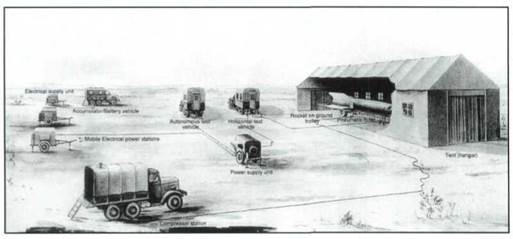
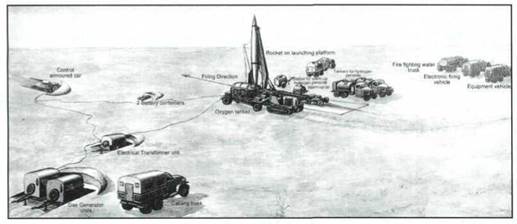
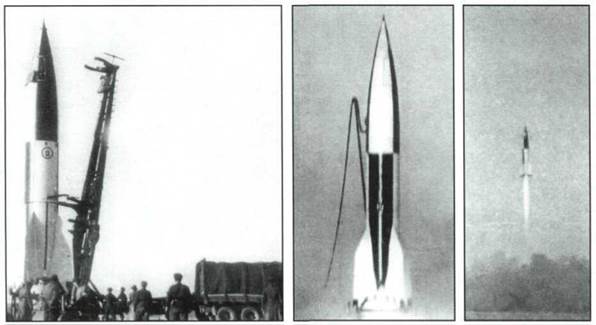
Rockets to investigate the upper atmosphere on the R-1 rocket base
|
|
|
The R-1E rocket payload module. The recoverable payload module mass was 760 kg. |
![]()

 The R-IA rocket (left). The first rocket that delivered scientific equipment in recoverable
The R-IA rocket (left). The first rocket that delivered scientific equipment in recoverable
containers (seen in the area of the stabilizers) into the upper
atmosphere.
|
|
|
|
|
|
|
|
|


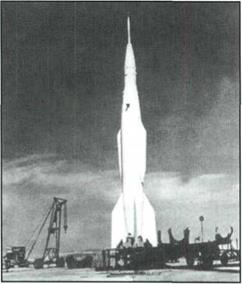

|
|
|
|
|
|
|

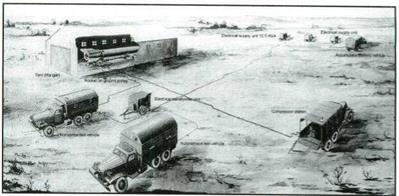
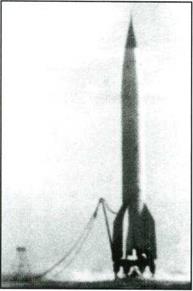
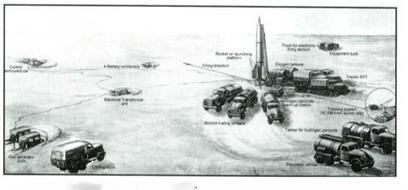
The R-2 rocket. This rocket had a separable payload module. Regular launches of the rocket began on October 26, 1950. The R-2 was developed in the shortest possible time owing to the use of parts and rigging from the R-1 rocket design.

|
|
|
|
|
|
|


|
|
|
|
|
|
|
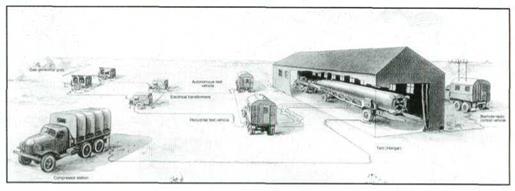
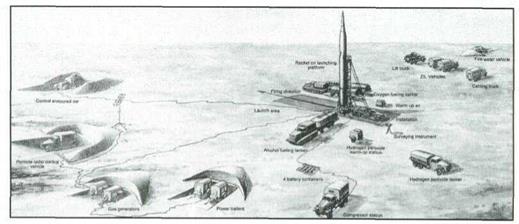
|
|||||
|
|
|
|||
|
|||||
|
|
||||
 |
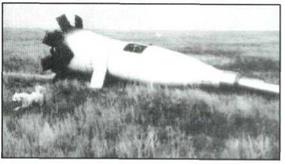
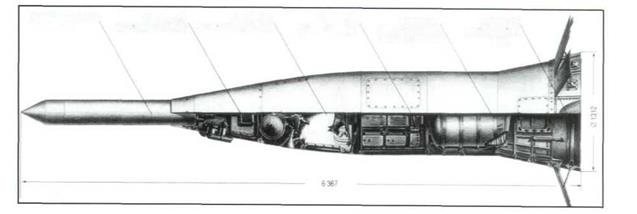


|
|||||||||||||||||||||||||||||||||||||
|
|||||||||||||||||||||||||||||||||||||
|
|||||||||||||||||||||||||||||||||||||
|
|||||||||||||||||||||||||||||||||||||
|
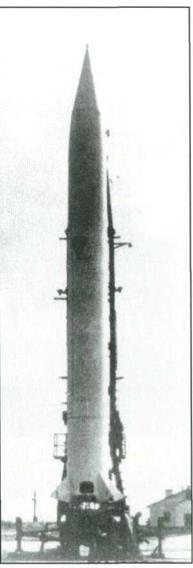
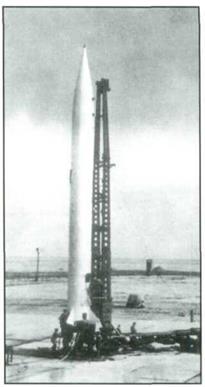
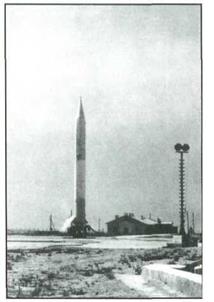

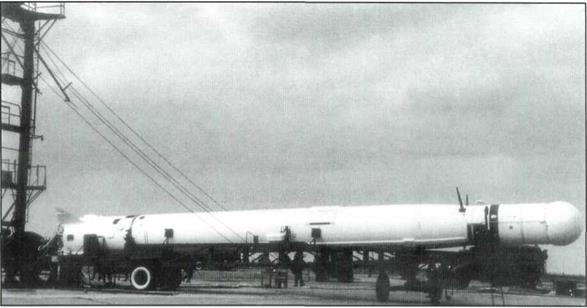
|
|
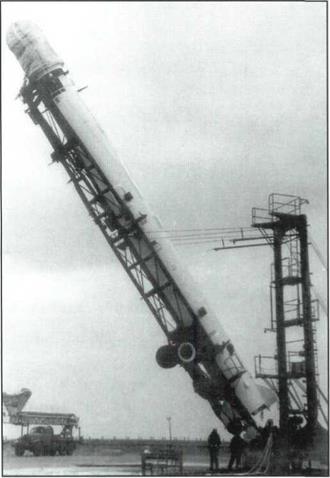 Transportation of the R-5V rocket and its installation on the launch pad. R-5V launches were performed until 1975 as part of the vertical program.
Transportation of the R-5V rocket and its installation on the launch pad. R-5V launches were performed until 1975 as part of the vertical program.
|
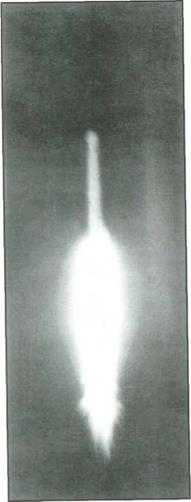
![]()
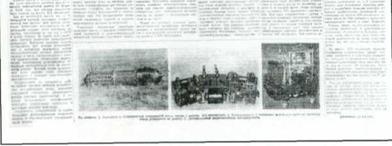
|
||||||||||||||||||||||||
|
||||||||||||||||||||||||
|
||||||||||||||||||||||||
|
||||||||||||||||||||||||
|
||||||||||||||||||||||||
|
||||||||||||||||||||||||
|
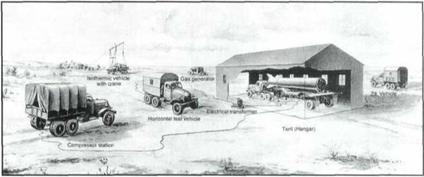
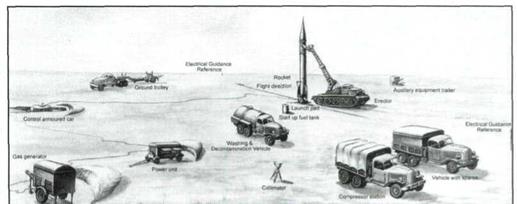
|
|
|
The R-l IFM rocket launch from a submarine. |

![]()

![]()
![]()
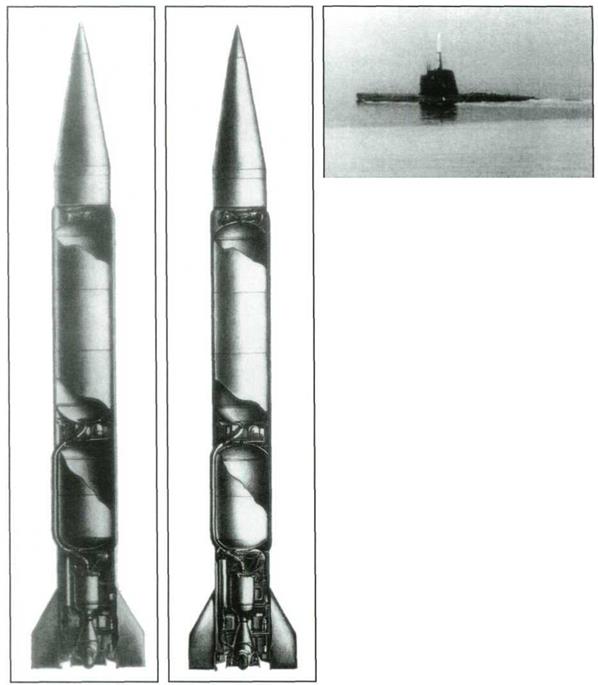
|
|

Design and development of launch vehicles
The R.-7 intercontinental rocket. This was the world’s first rocket capable of delivery of a nuclear warhead to any point in potential enemy territory. The Earth’s first artificial satellites were launched using this rocket.
|
|
|
|
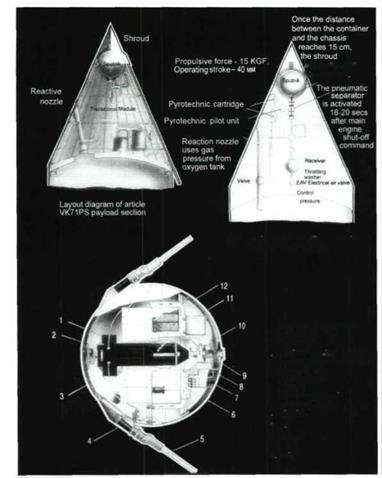 Onset of Space Era
Onset of Space Era

.separation spring ft. is activated
I. Ooubled thermal relay of thermal control system DTK-34
2 Radio transmitter D-200
3. Control thermal relay and pressure relay
4. Feed through
5. Antenna
6. Power supply unit
7. Interface Connector
8 Pivoting contact
9 Fan
10. Diffuser
II. Remote control switch

![]() 12 Shield
12 Shield
![]()
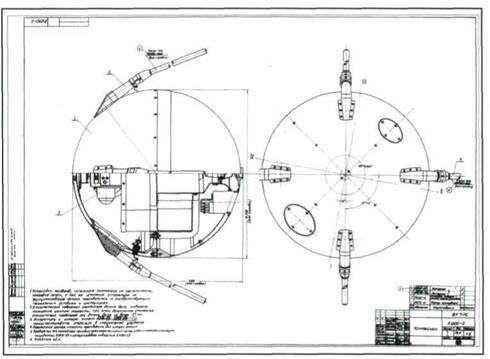 On October 3, 1957, the world learned the Russian word "Sputnik." On that day TASS informed the world of the launch of the first artificial satellite. Sputnik massed 83.6 kg and was the first man-made object to orbit the Earth.
On October 3, 1957, the world learned the Russian word "Sputnik." On that day TASS informed the world of the launch of the first artificial satellite. Sputnik massed 83.6 kg and was the first man-made object to orbit the Earth.
|
|||||||||||||||
|
|||||||||||||||
|
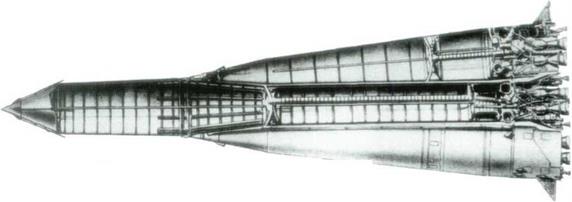
|
|
|
|
|
|
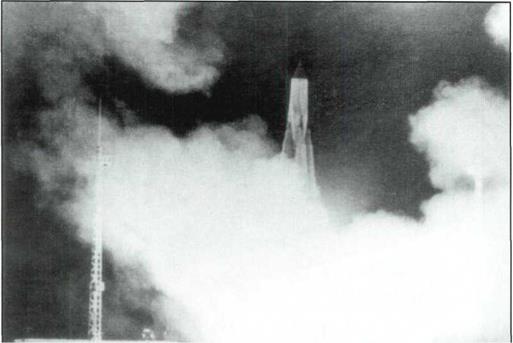
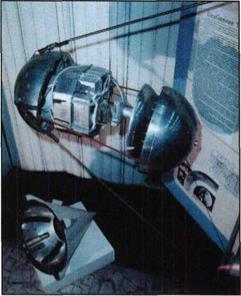
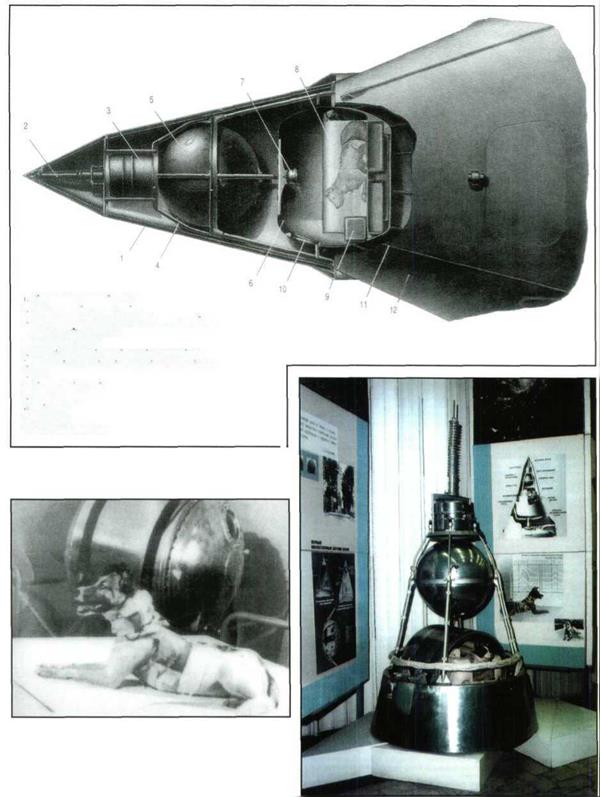 ‘ Disposable protective hull 2 Hull separation mechanism 3 Instruments for studying short-wave section
‘ Disposable protective hull 2 Hull separation mechanism 3 Instruments for studying short-wave section
of the Suns spectrum
l. Instrument frame 5 Spherical container with radio transmitter ь Pressurized cabin with experimental animal 7 Fan
B. Air scrubbing unit 9 Food trough ‘0. Window 11. Antenna 12. Transfer Module
The second EAS, which massed 508.3 kg. The dog Laika was the passenger aboard the satellite.
Laika before boarding the special EAS compartment.
|
|
|
|
|
|
|
|
|
|
|
|
 |
|
|
|
|
|
|
|
|
|
|
|
|
|
|
|
|
|
|
|
|
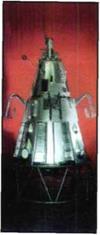
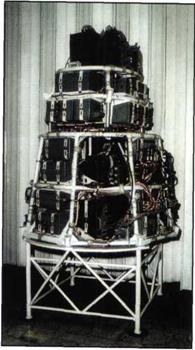
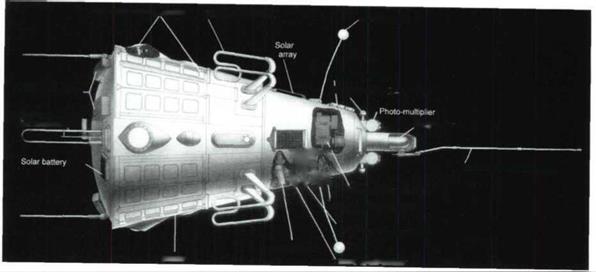
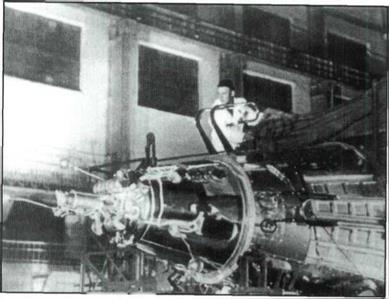
Onset of Flights to the Moon
|
|
||
|
|||
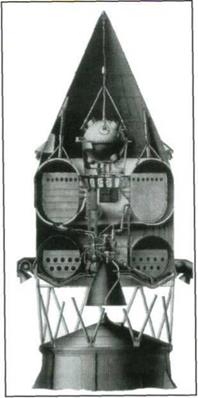
|
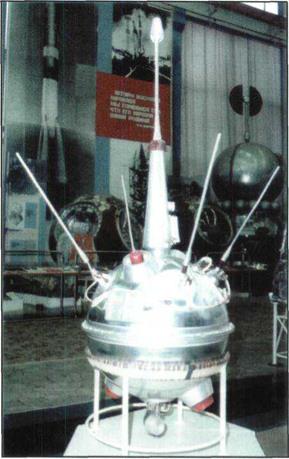
Pennants delivered to the Moon by the Luna-2
interplanetary
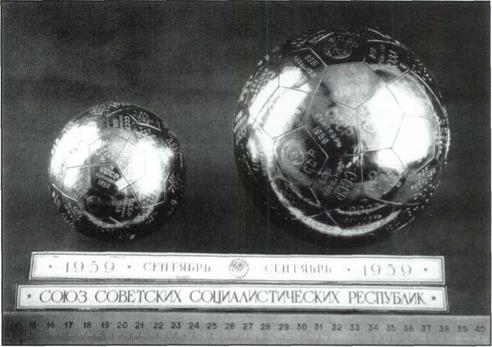 station.
station.
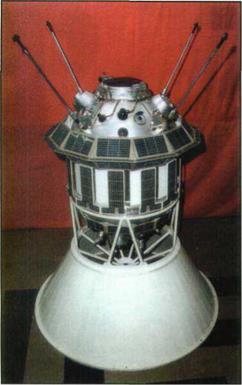
|
|
|
|
|
|
|
|
|
|
|
|
|
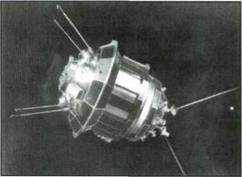
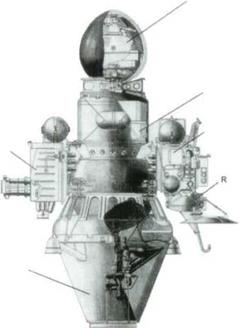
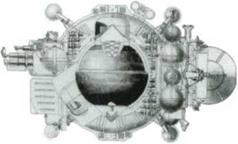
![]()
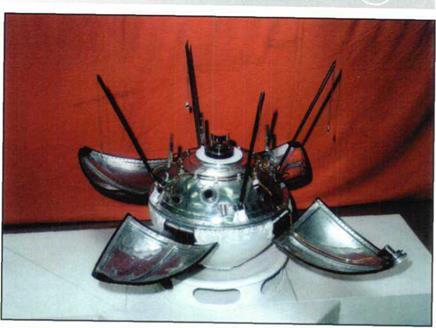 The world’s first closed-loop liquid rocket engine had a thrust of about 7 tons and was developed at Korolev’s KB. The engine was installed on the L booster of the Molniya four-stage launch vehicle.
The world’s first closed-loop liquid rocket engine had a thrust of about 7 tons and was developed at Korolev’s KB. The engine was installed on the L booster of the Molniya four-stage launch vehicle.
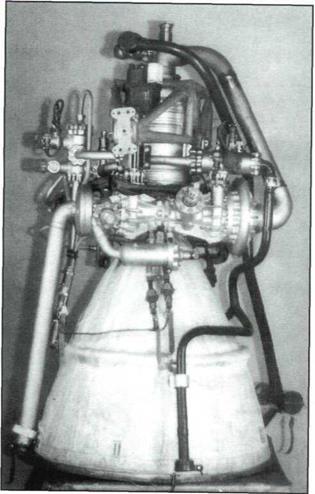
|
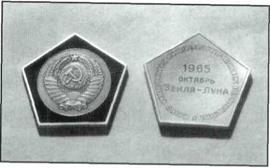
|
|
|
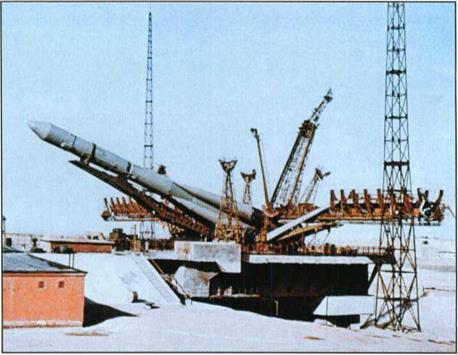
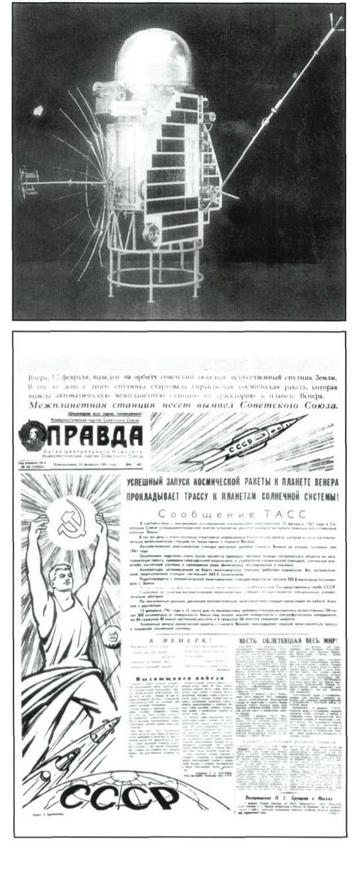 First vehicles to investigate Venus and Mars
First vehicles to investigate Venus and Mars
Venera-l (IVA).
|
|
|
|
|
|
|
|
|
|
|
|
|
|
|
|
|
|
|
|
|
|
|
|
|
|
|
|

![]()
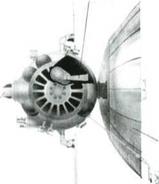
![]()
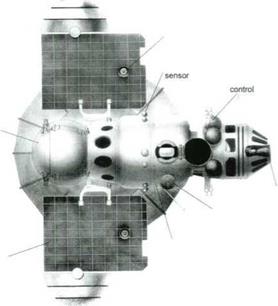
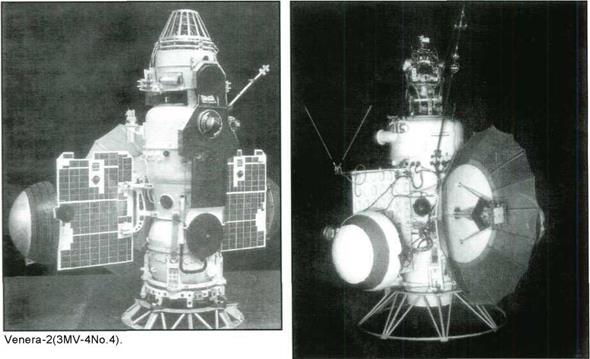

|
|
|
|
|
|
|
|
|
|
|
|
|
|
|
|
|
|
|
|
|
|
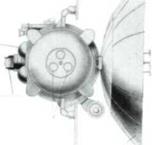
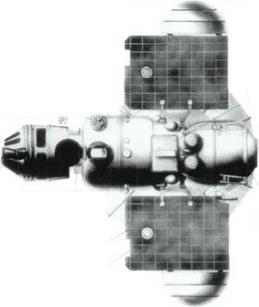
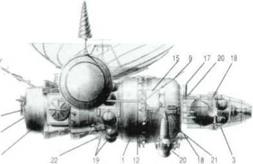
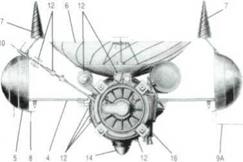

|
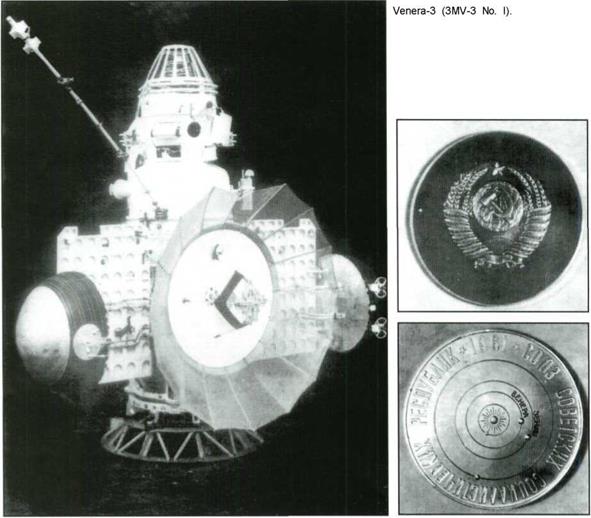
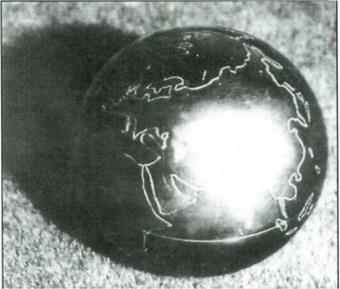











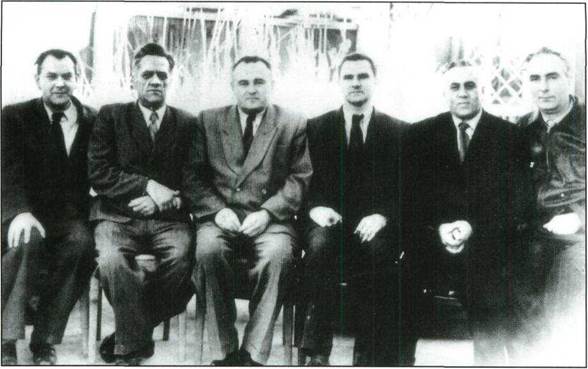
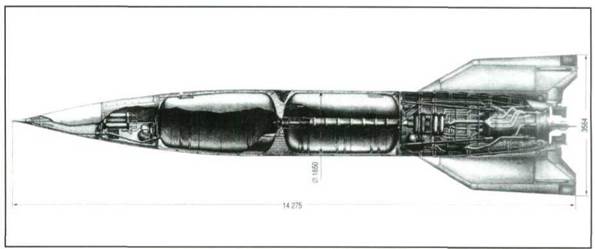
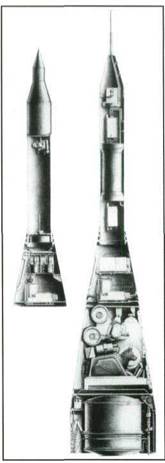
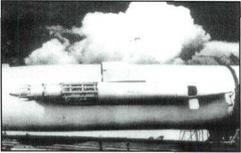
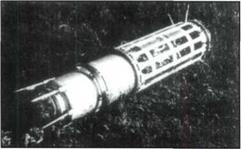
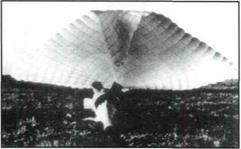
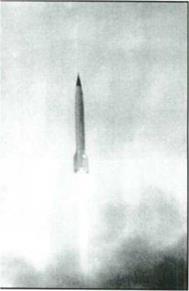
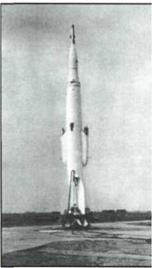




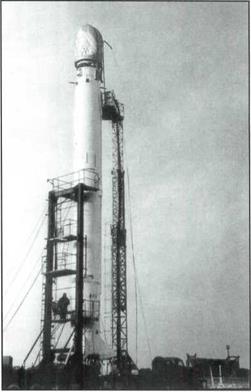
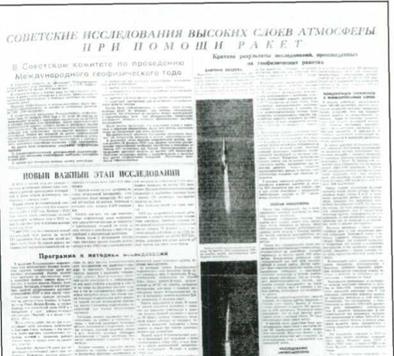


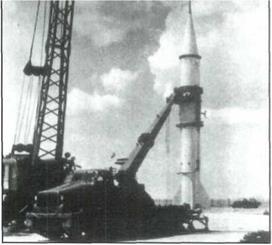
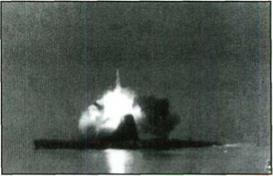
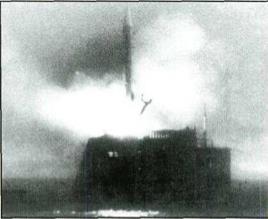
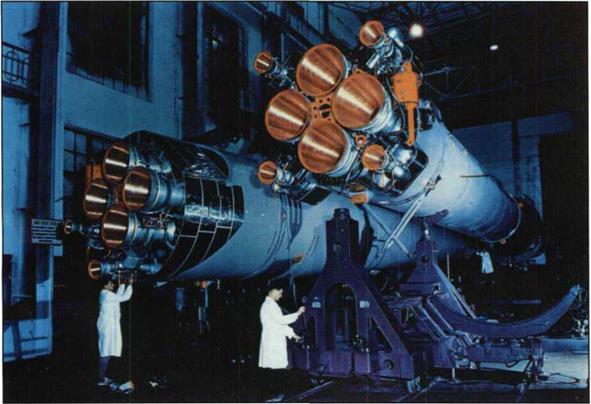
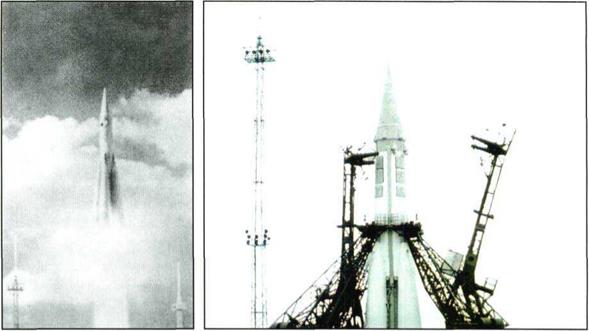
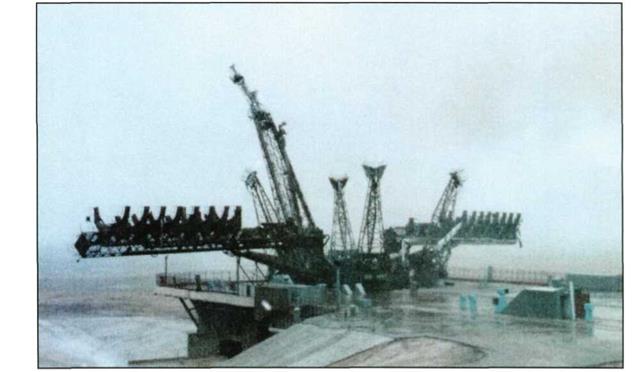
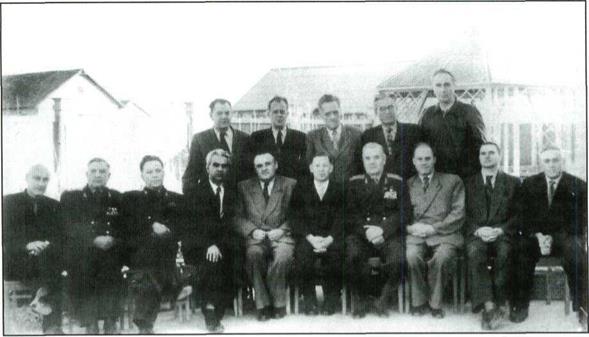


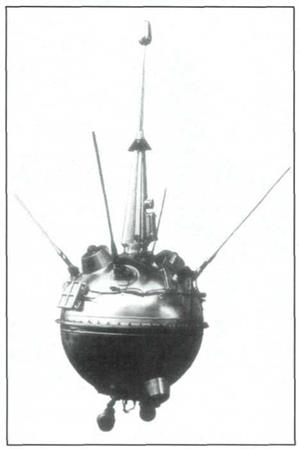
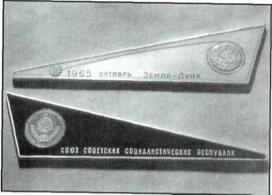
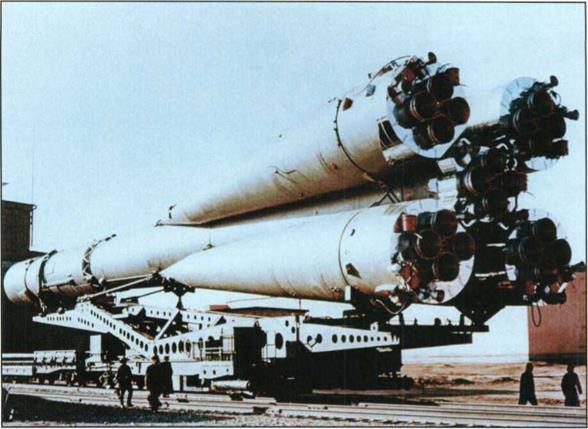
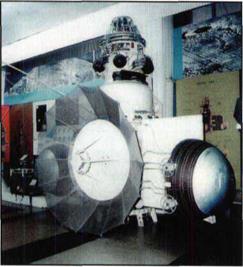
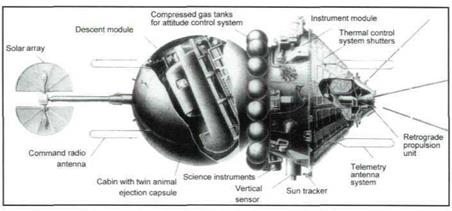

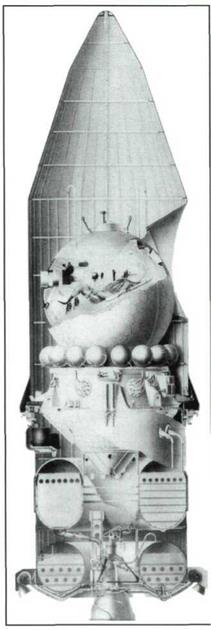



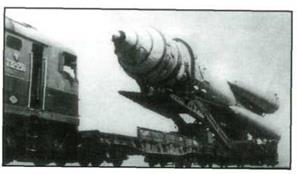
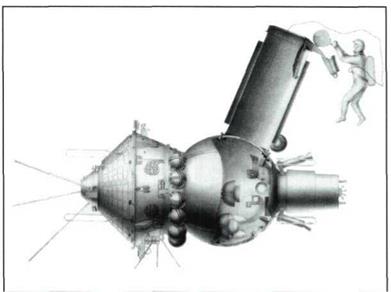
 The Voskhod multi-man spacecraft made it possible to put a crew of three people into space, and as well provided a special airlock through which a man could egress into space.
The Voskhod multi-man spacecraft made it possible to put a crew of three people into space, and as well provided a special airlock through which a man could egress into space.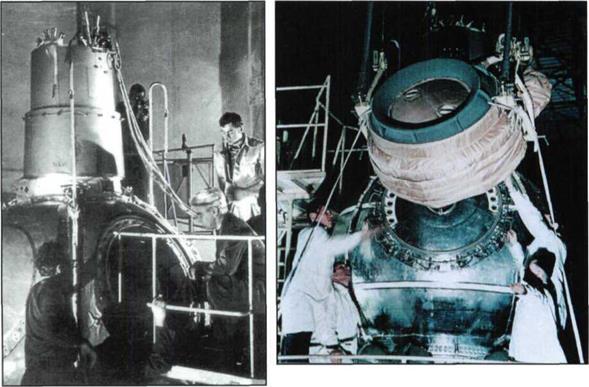
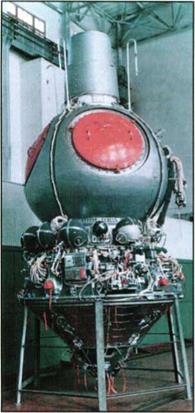

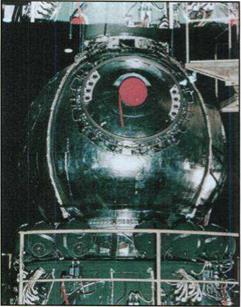

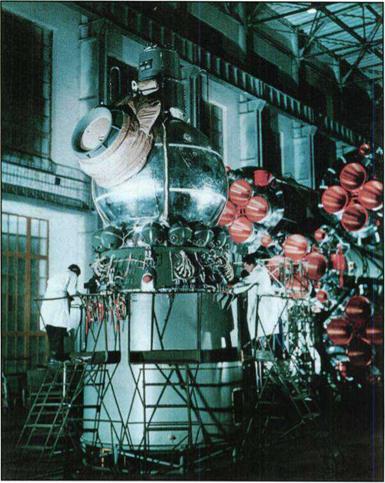
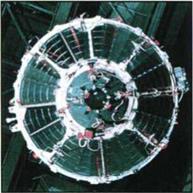

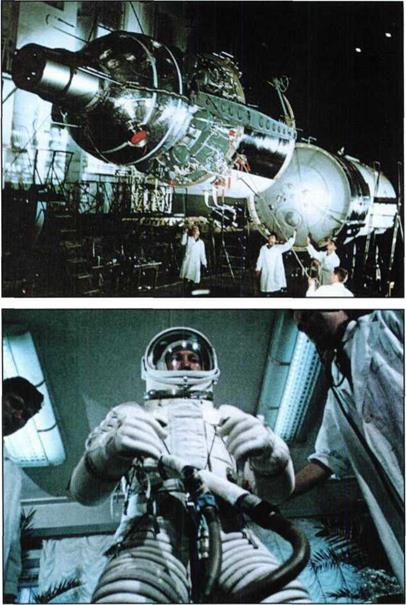 Cosmonaut A. A. Leonov before flight. He was the first to egress into space and stayed there for 12 minutes and 9 seconds. He moved away from the spacecraft a distance of 5 meters.
Cosmonaut A. A. Leonov before flight. He was the first to egress into space and stayed there for 12 minutes and 9 seconds. He moved away from the spacecraft a distance of 5 meters.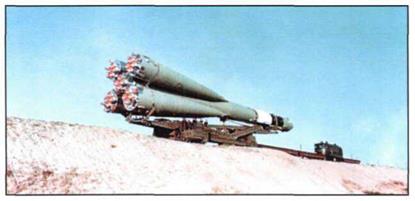
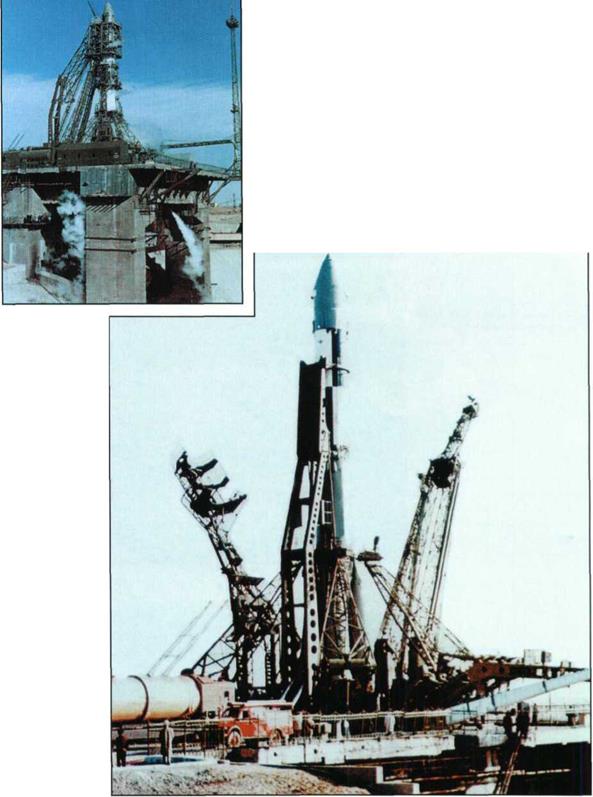
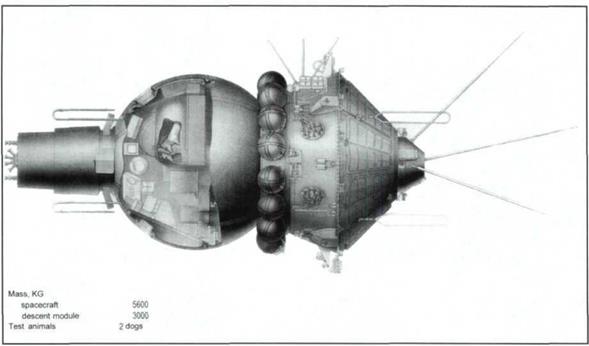

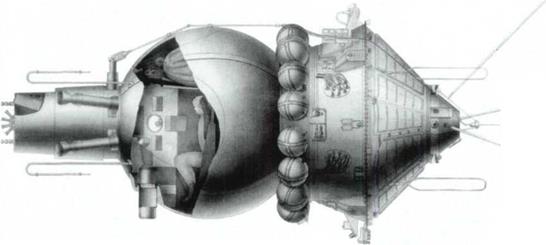


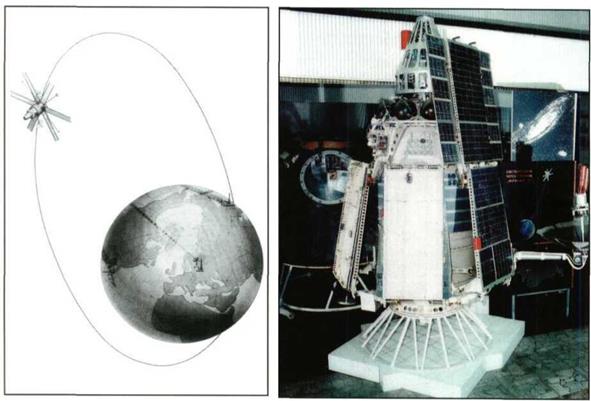

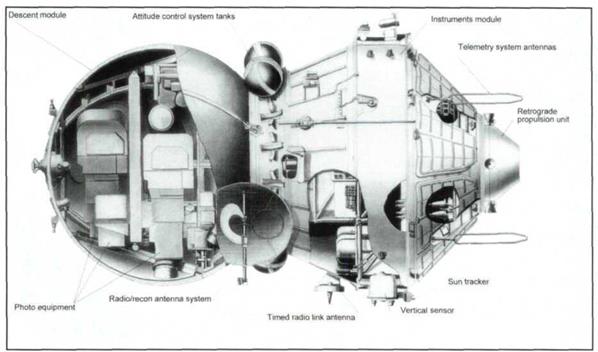




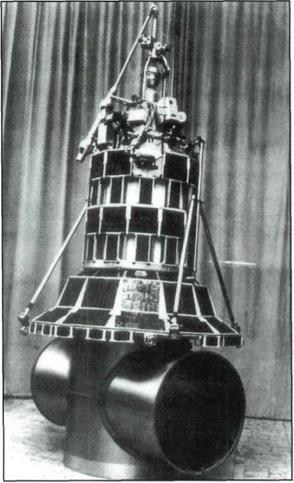 The Electron satellite system made it possible to get data on the radiation belt and the Earth’s magnetic field that was necessary to provide radiation safety on manned flights.
The Electron satellite system made it possible to get data on the radiation belt and the Earth’s magnetic field that was necessary to provide radiation safety on manned flights.
 The RT-2 missile (left) was the first intercontinental solid-propellant missile. Its first launch took place on February 26, 1966. In 1968 the missile was added to inventory.
The RT-2 missile (left) was the first intercontinental solid-propellant missile. Its first launch took place on February 26, 1966. In 1968 the missile was added to inventory.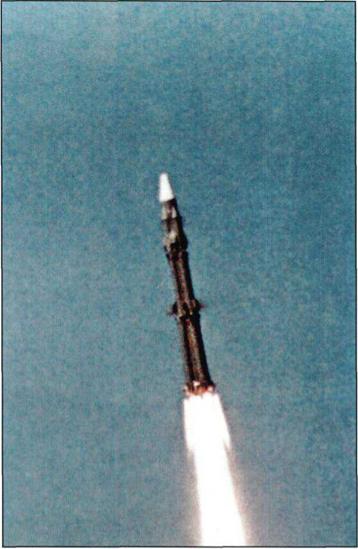 The RT-I missile (right). The first strategic solid-propellant missile. Its first launch took place on April 28, 1962.
The RT-I missile (right). The first strategic solid-propellant missile. Its first launch took place on April 28, 1962.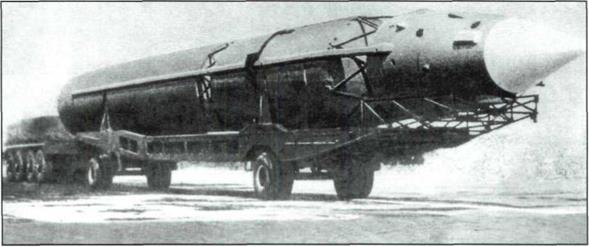
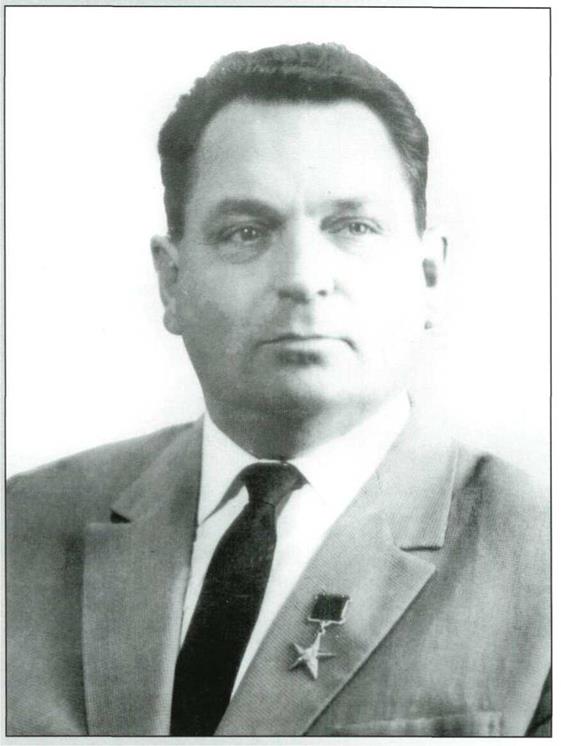

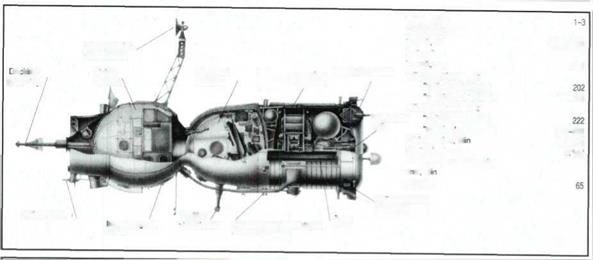
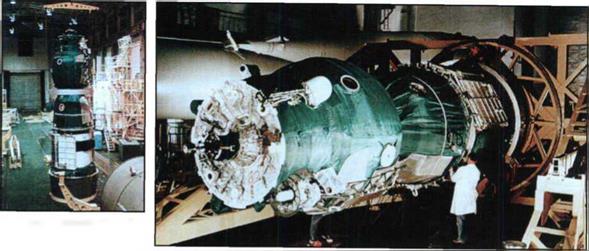
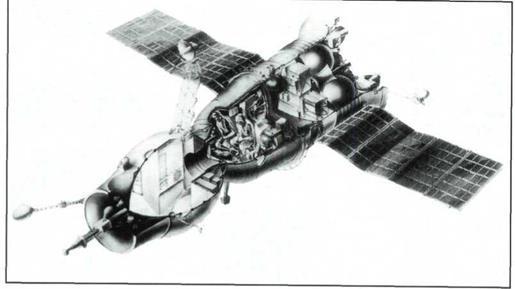 The Soyuz spacecraft (7K-OK) designed to execute a wide variety of tasks, including automatic and manual rendezvous, and docking with orbital spacecraft and stations.
The Soyuz spacecraft (7K-OK) designed to execute a wide variety of tasks, including automatic and manual rendezvous, and docking with orbital spacecraft and stations.



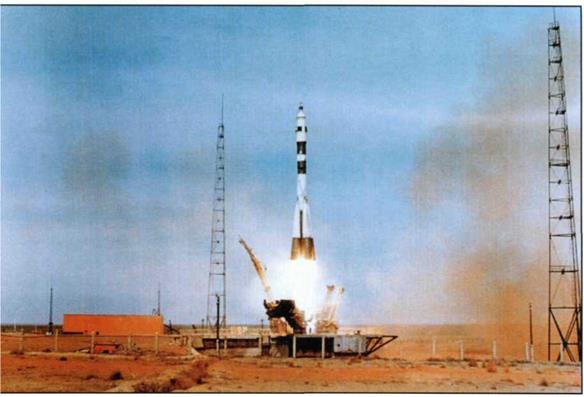
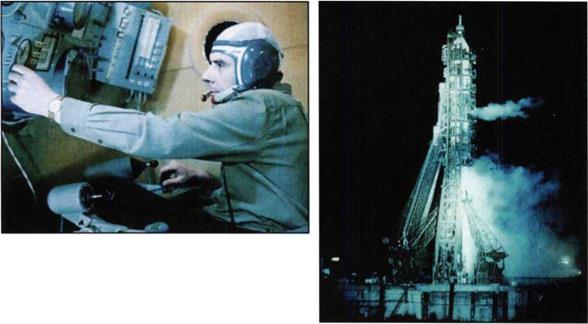

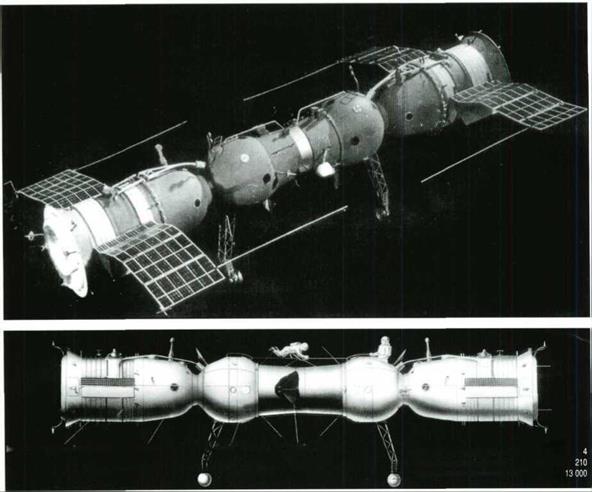 Instrument propulsion module Descent module i Orbital module Docking module
Instrument propulsion module Descent module i Orbital module Docking module

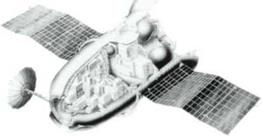
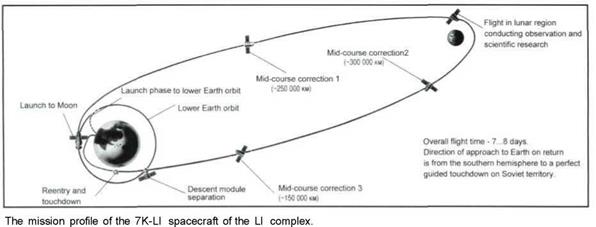
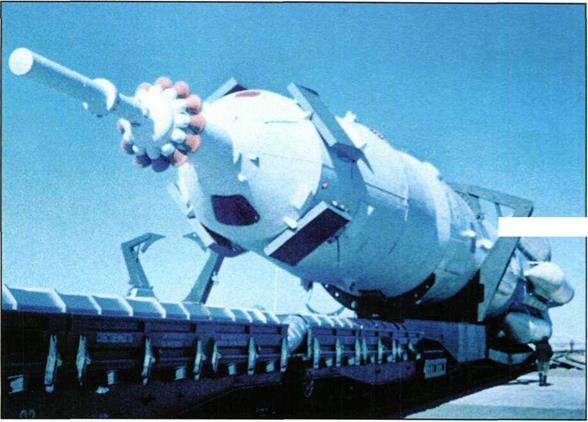
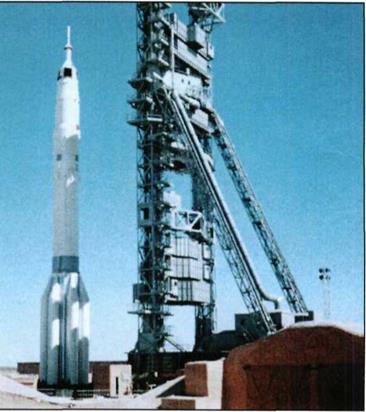 The Proton launch vehicle with the LI complex on the launch pad.
The Proton launch vehicle with the LI complex on the launch pad.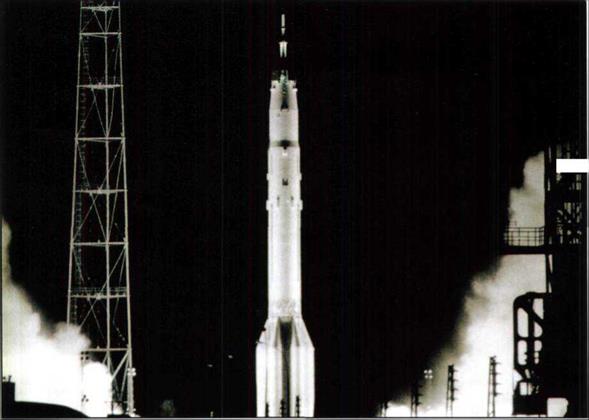
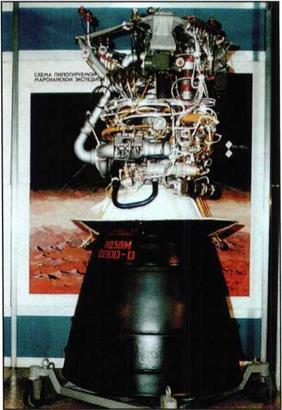 The close-cycle liquid fuel rocket engine I ID58M of TsKBEM development. This engine of 8.5 tons thrust uses oxygen and hydrocarbon fuel as propellant components. It was the world’s first engine to provide multiple in-flight firing.
The close-cycle liquid fuel rocket engine I ID58M of TsKBEM development. This engine of 8.5 tons thrust uses oxygen and hydrocarbon fuel as propellant components. It was the world’s first engine to provide multiple in-flight firing.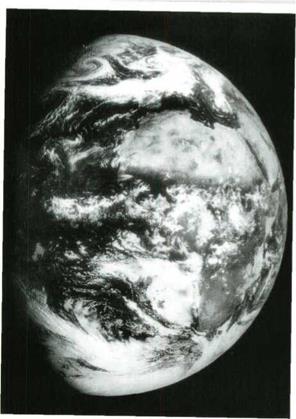
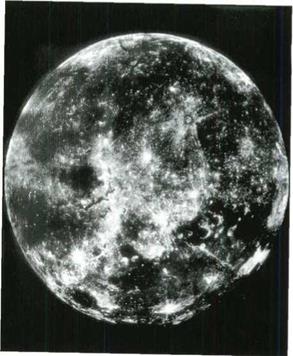
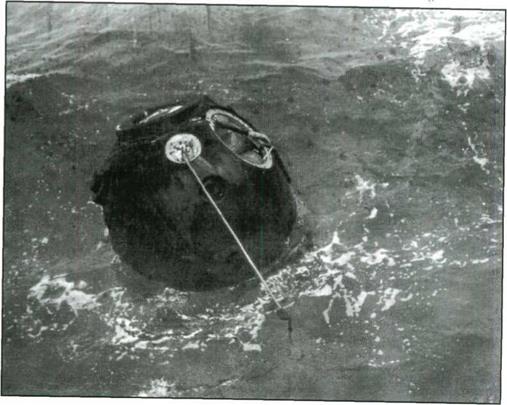
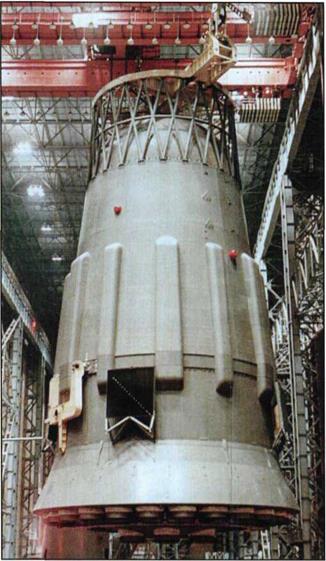
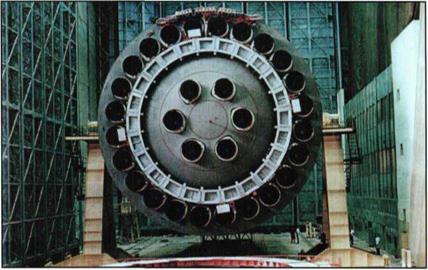
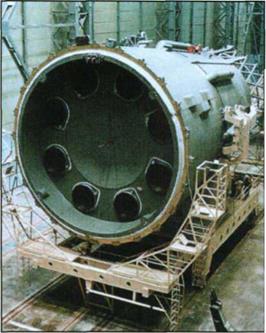 The V block was used as the third stage. Maximum diameter of the block is about 7.6 meters with the height (by the interfaces) being I 1.5 meters. The block houses four engines with a vacuum thrust of 41 tons each.
The V block was used as the third stage. Maximum diameter of the block is about 7.6 meters with the height (by the interfaces) being I 1.5 meters. The block houses four engines with a vacuum thrust of 41 tons each.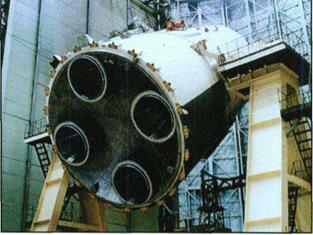
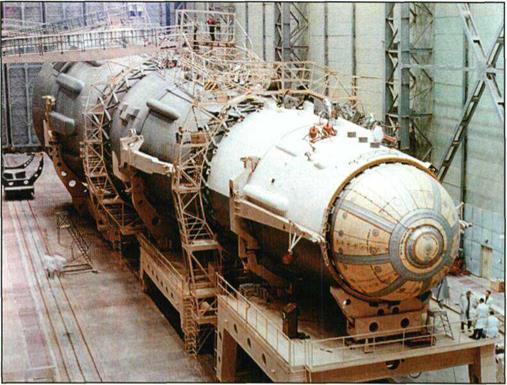



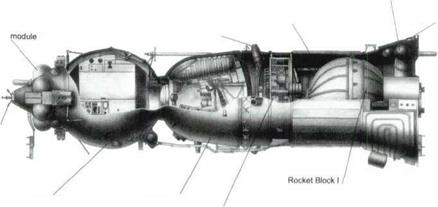 Rendezvous and attitude control thruster
Rendezvous and attitude control thruster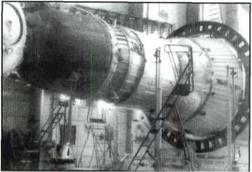 Thrust. KGF 417
Thrust. KGF 417
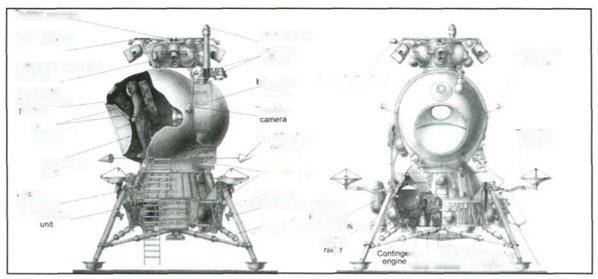
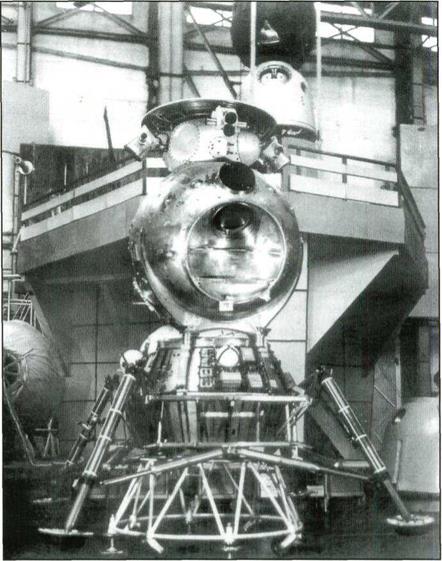 The lunar vehicle in the shop.
The lunar vehicle in the shop.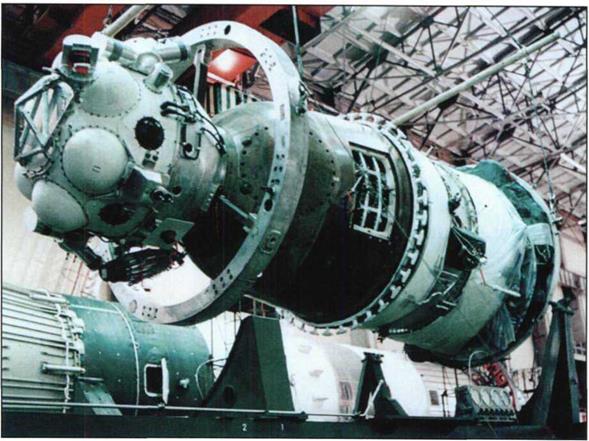
 The
The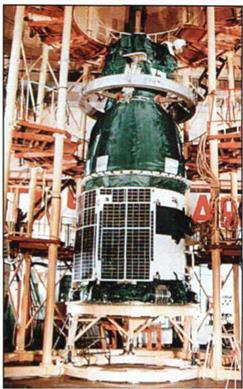 jig-
jig-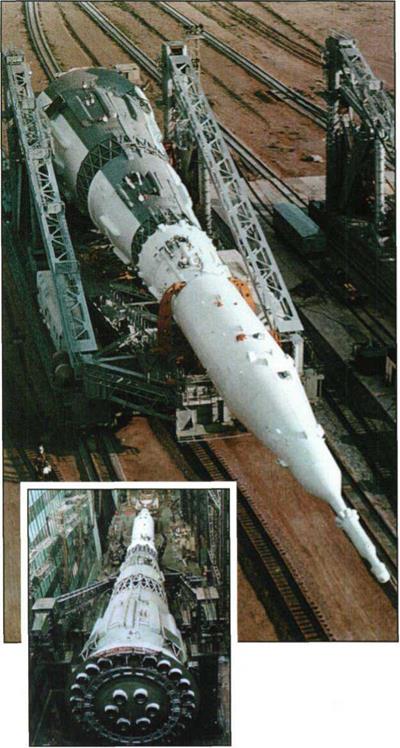
 The NI-L3 space system on the transport-erecting assembly in the assembly building, ready for roll-out to the launch area.
The NI-L3 space system on the transport-erecting assembly in the assembly building, ready for roll-out to the launch area.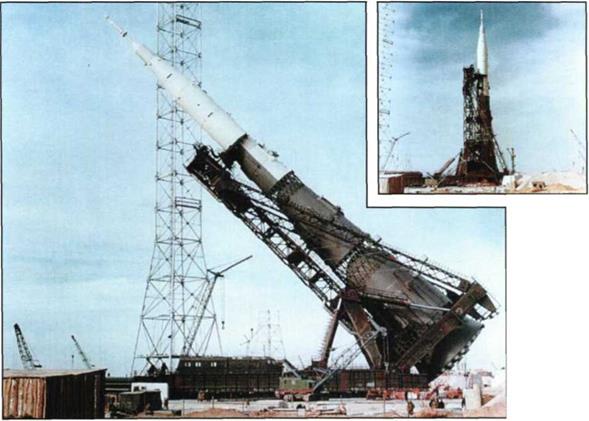 The NI-L3 system is erected vertically on the launcher. The transport – erecting assembly is not moved away.
The NI-L3 system is erected vertically on the launcher. The transport – erecting assembly is not moved away.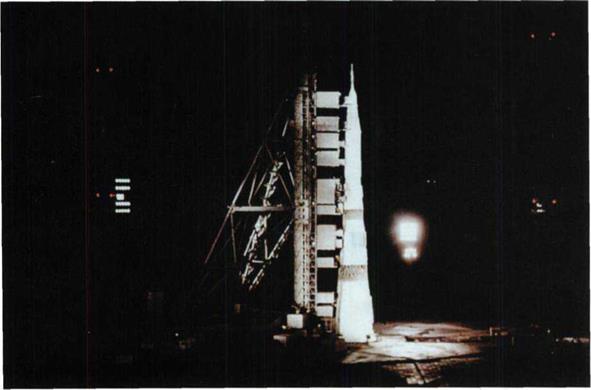
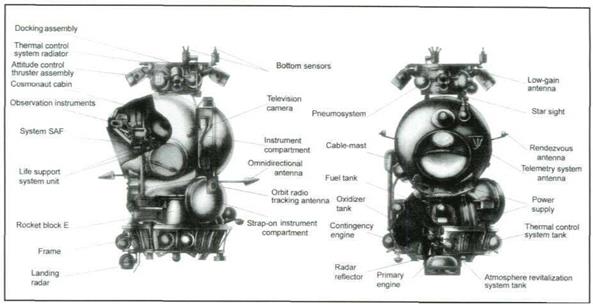
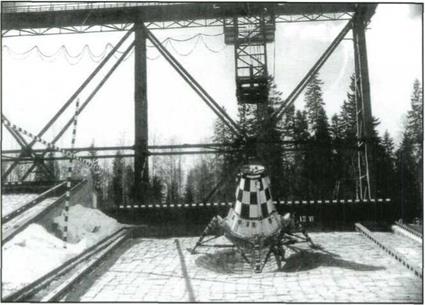

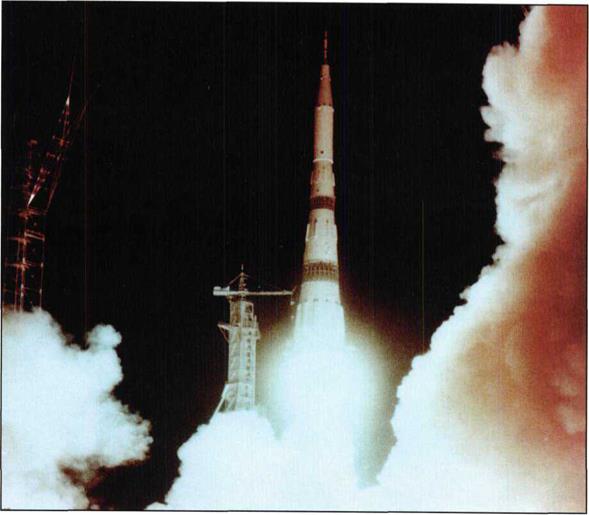
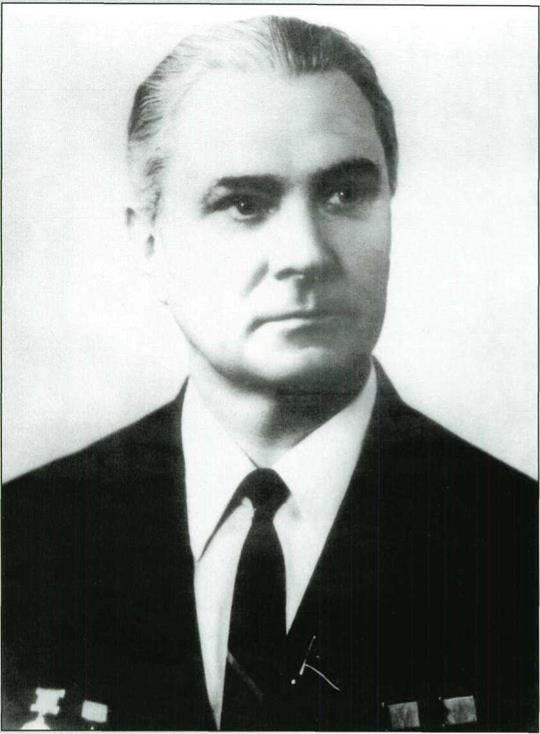


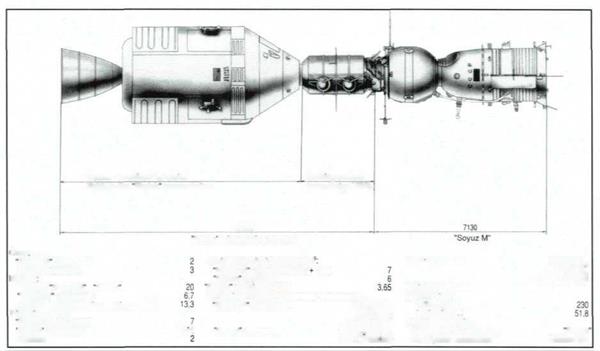

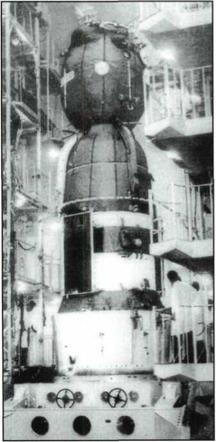 Transportation of the Soyuz launch vehicle with the Soyuz-19 spacecraft to the launching area.
Transportation of the Soyuz launch vehicle with the Soyuz-19 spacecraft to the launching area.









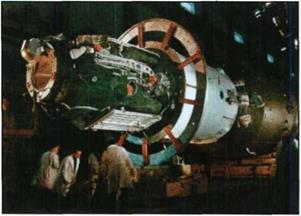 Mass scientific research instruments and equipment, KG, no more than 1500
Mass scientific research instruments and equipment, KG, no more than 1500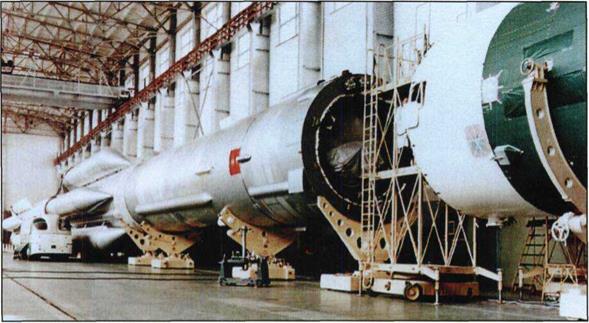

 The Proton launch vehicle with the first Zarya orbital station, which was called Salyut in the press, on the launch pad.
The Proton launch vehicle with the first Zarya orbital station, which was called Salyut in the press, on the launch pad.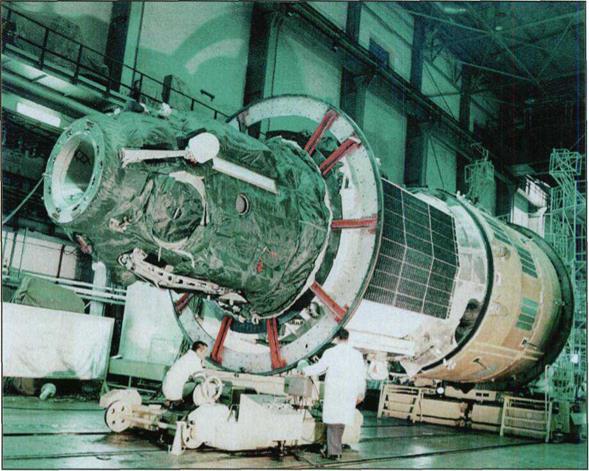


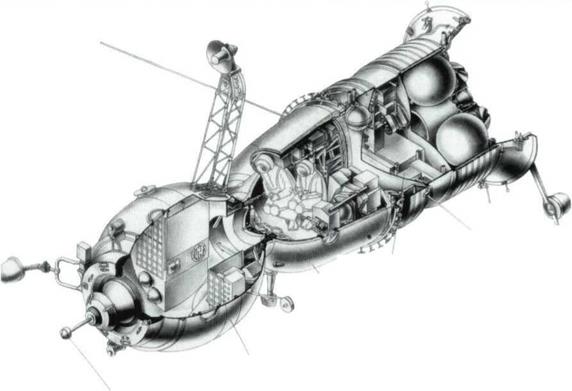
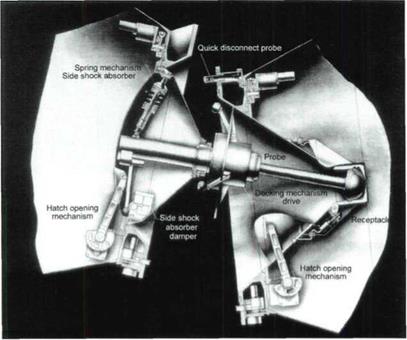 Orbital parameters,
Orbital parameters,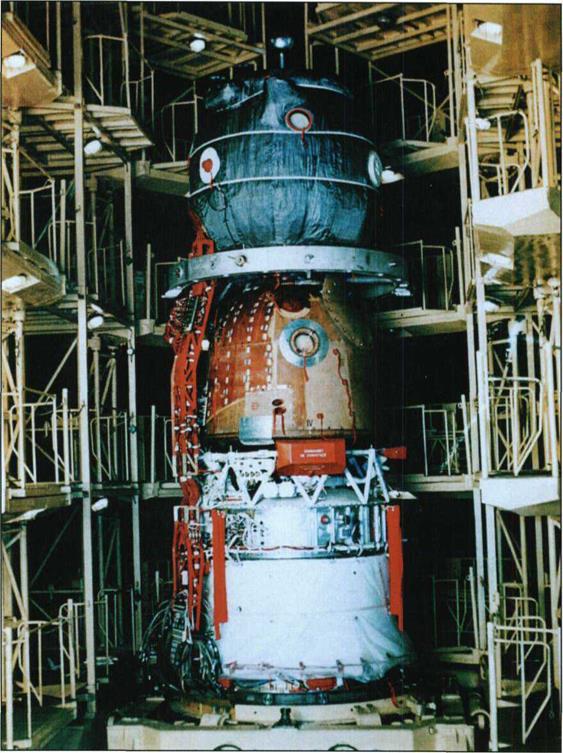

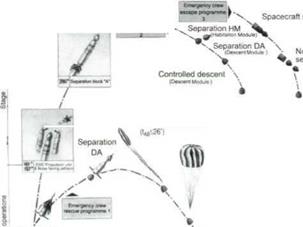
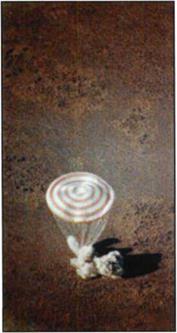


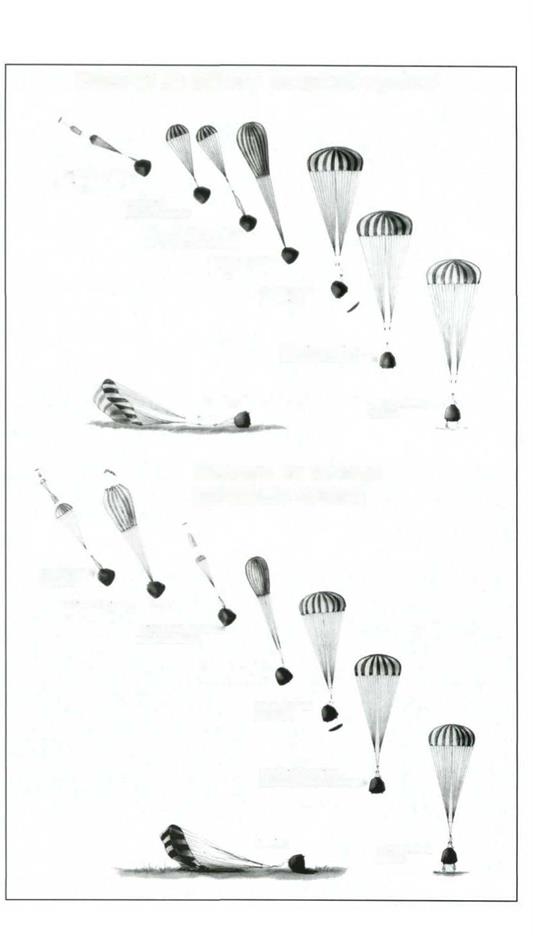

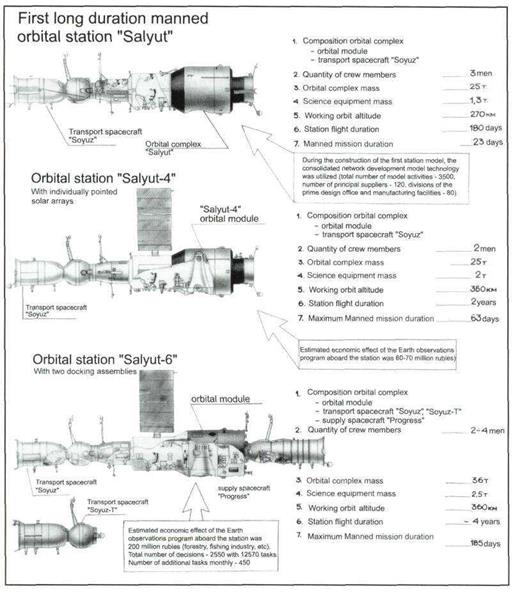

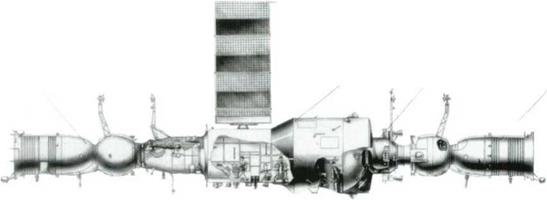
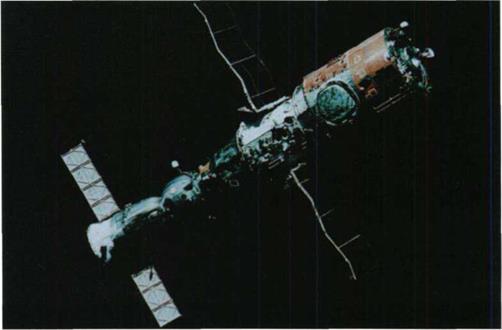
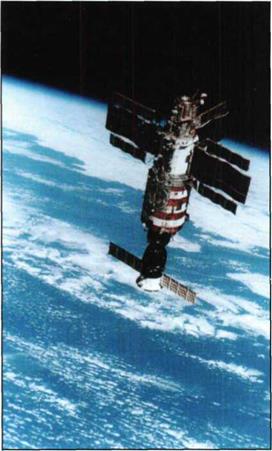 The Salyut-7 orbital station with the docked SoyuzT spacecraft in flight.
The Salyut-7 orbital station with the docked SoyuzT spacecraft in flight.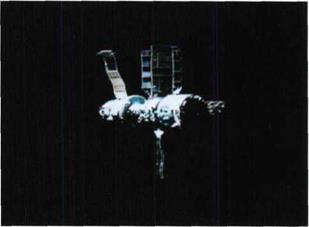


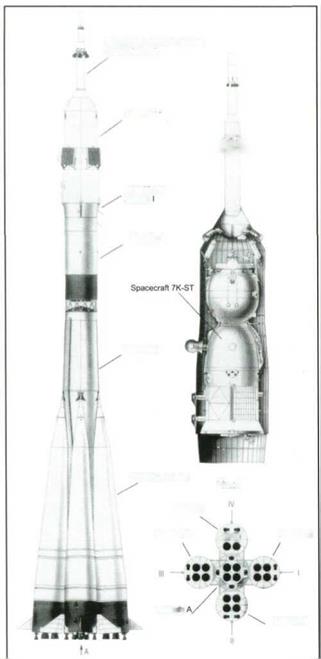 The I I AS 11Y launch vehicle with the 7K.-ST (SoyuzT) spacecraft.
The I I AS 11Y launch vehicle with the 7K.-ST (SoyuzT) spacecraft.

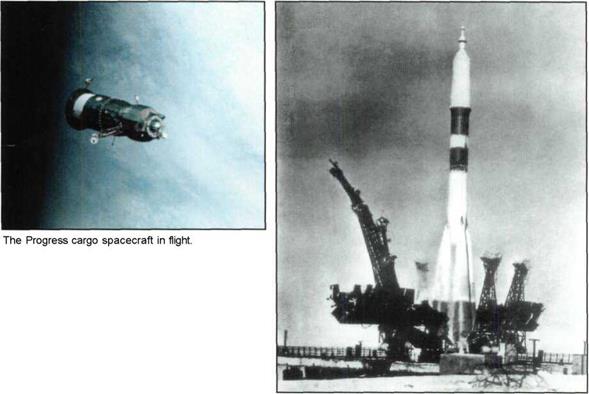

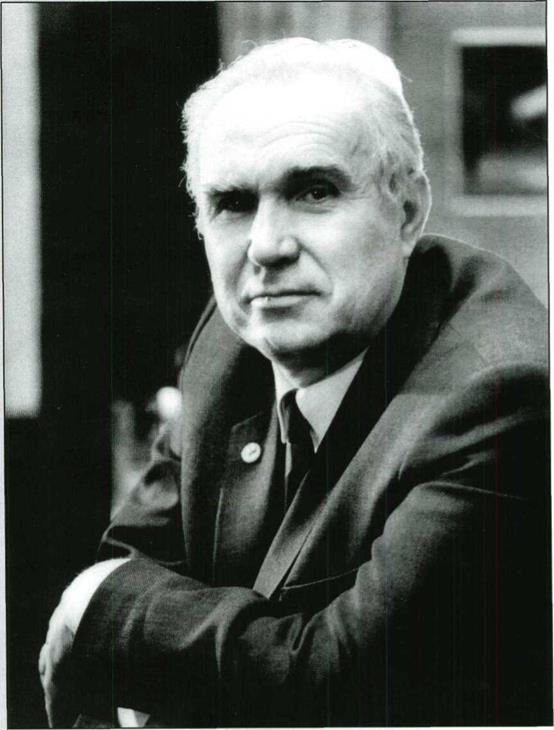

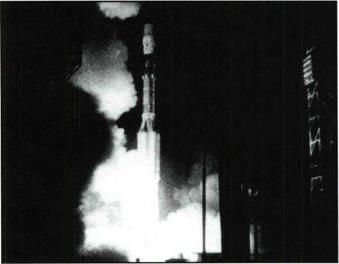
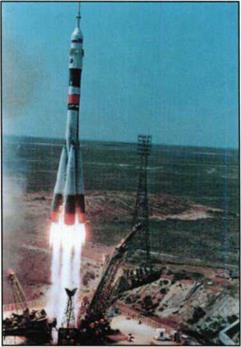
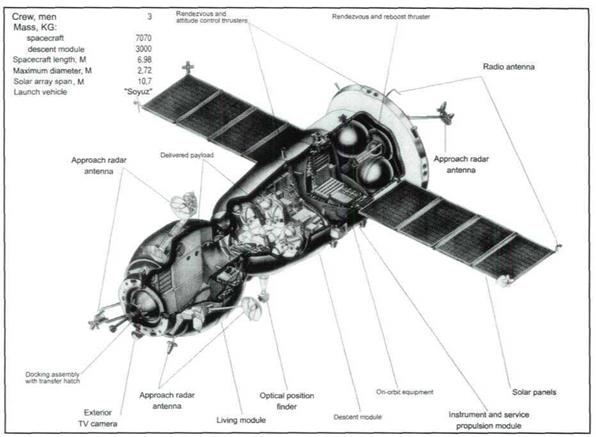
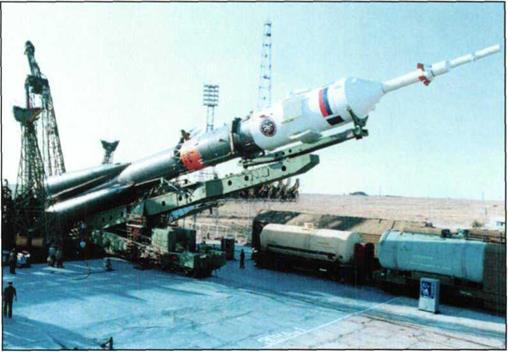

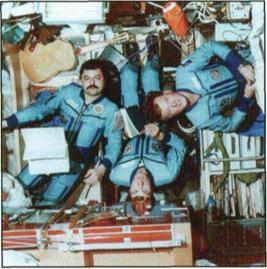
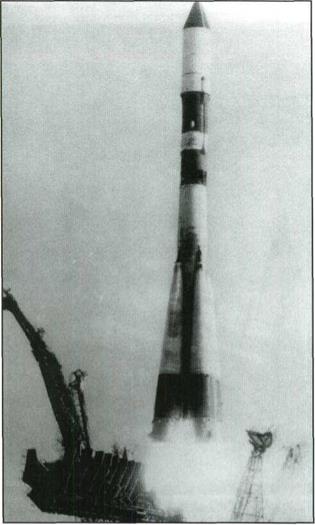 Launch of the Soyuz launch vehicle with the Progress M cargo spacecraft.
Launch of the Soyuz launch vehicle with the Progress M cargo spacecraft.
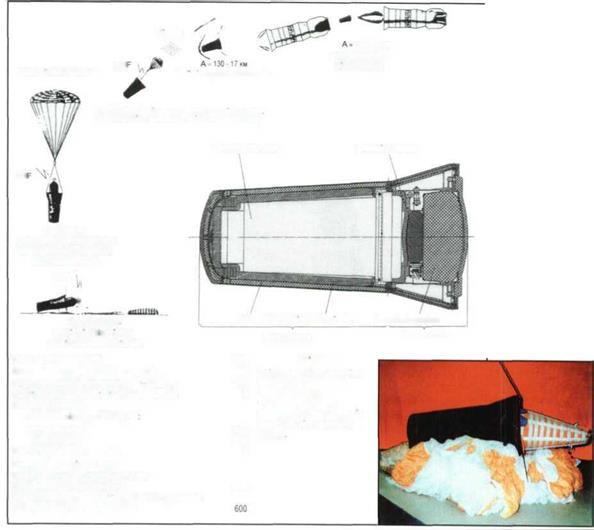

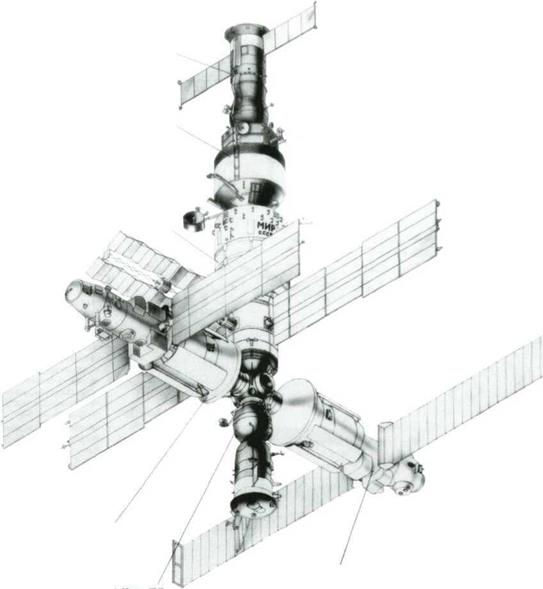
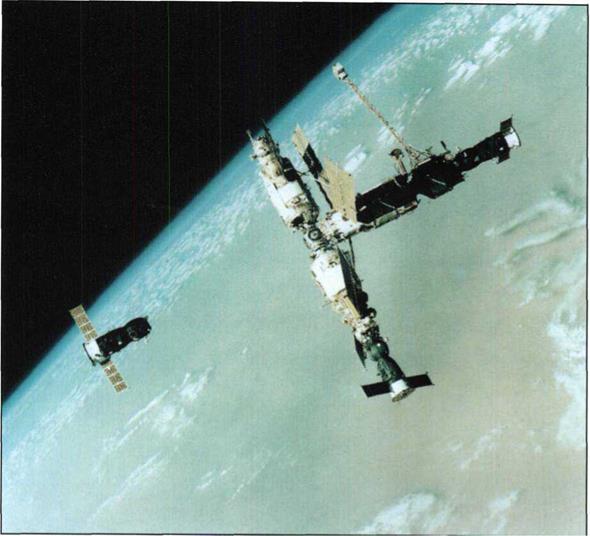
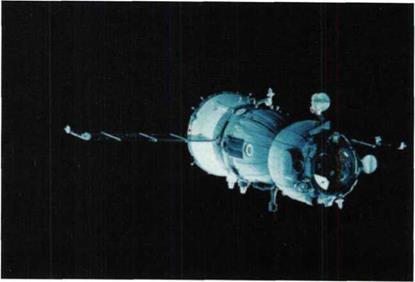 The Mir complex with the Kvant, Kvant-2 and Kristall modules, transport spacecraft Soyuz TM – 16, cargo spacecraft Progress M – 17 and undocked cargo spacecraft Progress M-18. The picture was taken from the Soyuz TM-17 transport spacecraft on July 3, 1993.
The Mir complex with the Kvant, Kvant-2 and Kristall modules, transport spacecraft Soyuz TM – 16, cargo spacecraft Progress M – 17 and undocked cargo spacecraft Progress M-18. The picture was taken from the Soyuz TM-17 transport spacecraft on July 3, 1993.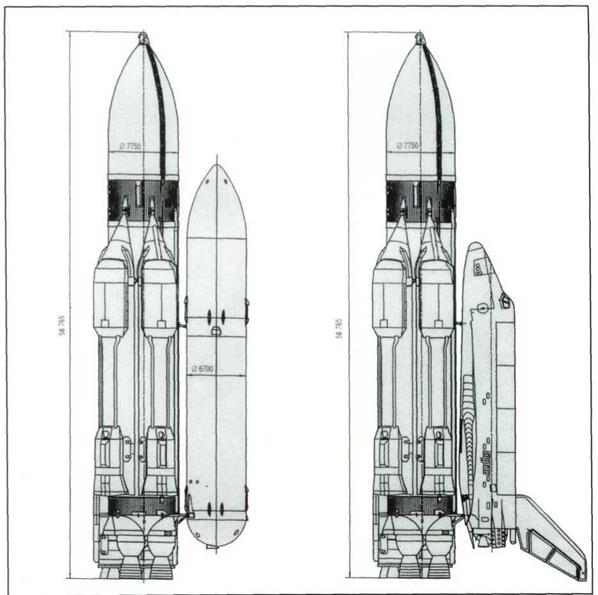

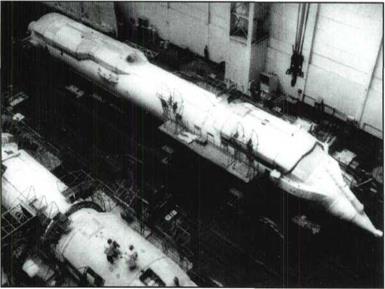



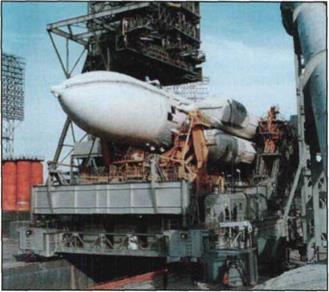


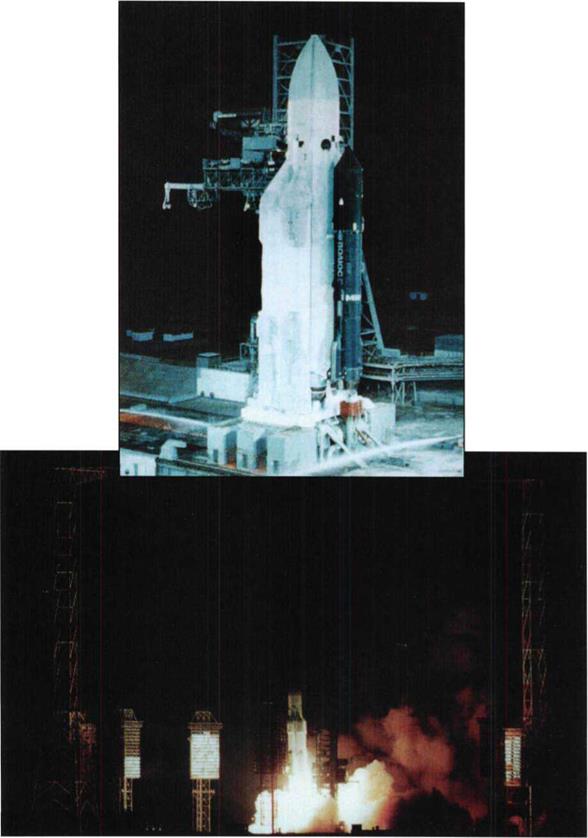
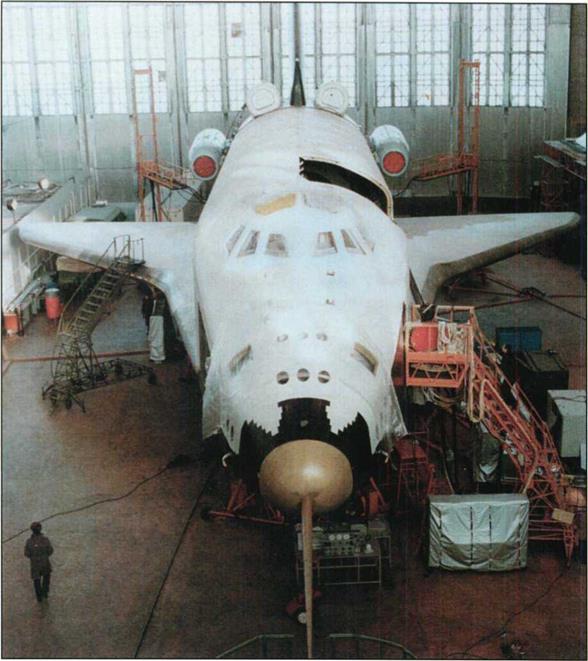
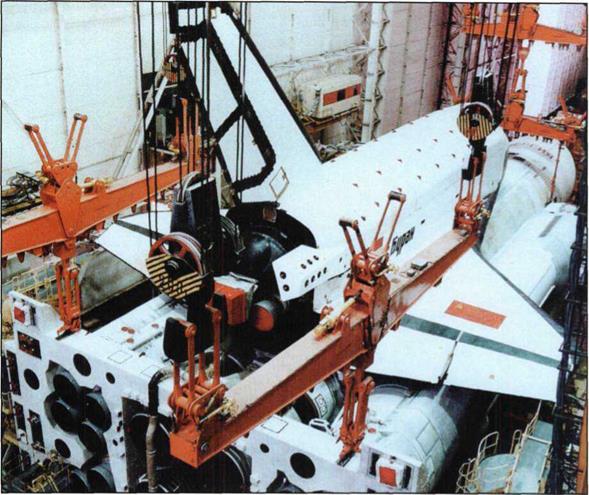
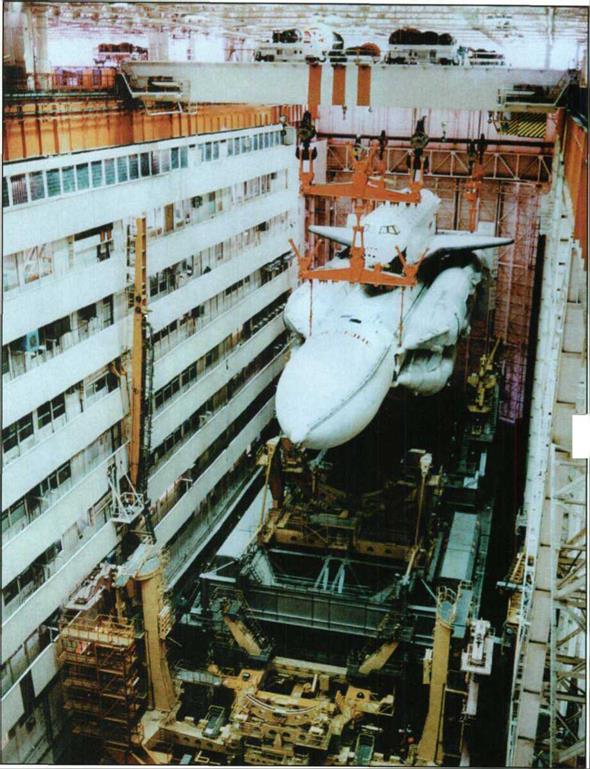
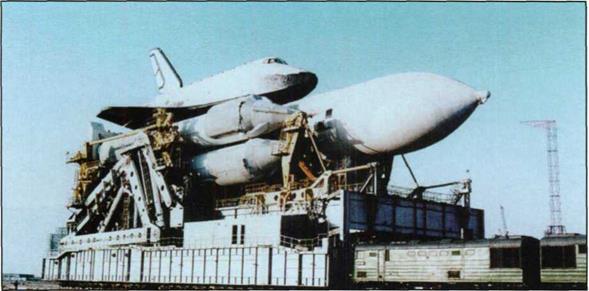

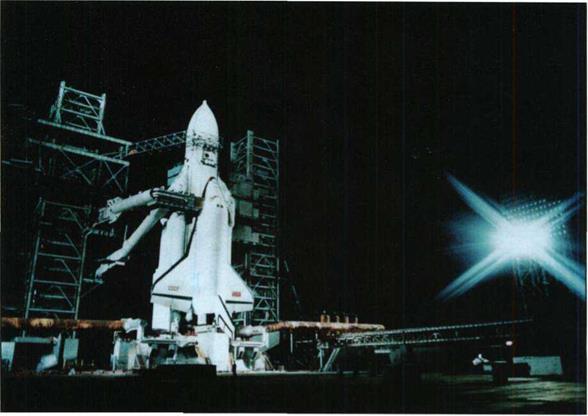
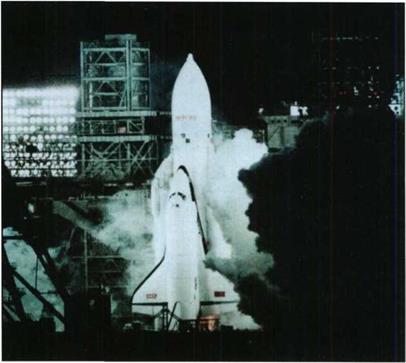
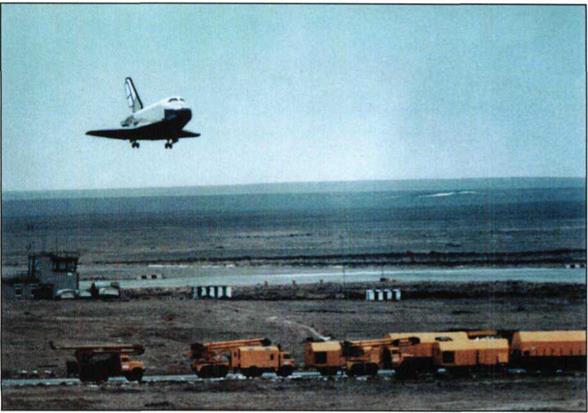

 A number of launch vehicles designed on the basis of the Energia launch vehicle. They use the same elements (modules, engines, etc.), which substantially reduces the time frame of their development.
A number of launch vehicles designed on the basis of the Energia launch vehicle. They use the same elements (modules, engines, etc.), which substantially reduces the time frame of their development.



